La Salida de Huelva
There are many different aspects to the Romería to El Rocío, the great pilgrimage of Andalucía, some of which we hadn’t seen before. Our friend and riding instructor was making the pilgrimage on horseback with the Hermandad de Huelva, the brotherhood of our nearest city. So we went to see her off at the Salida de Huelva, a grand celebration to honour the departure of the pilgrims, in which the brotherhood files past the Town Hall and sets off on its way to El Rocío.
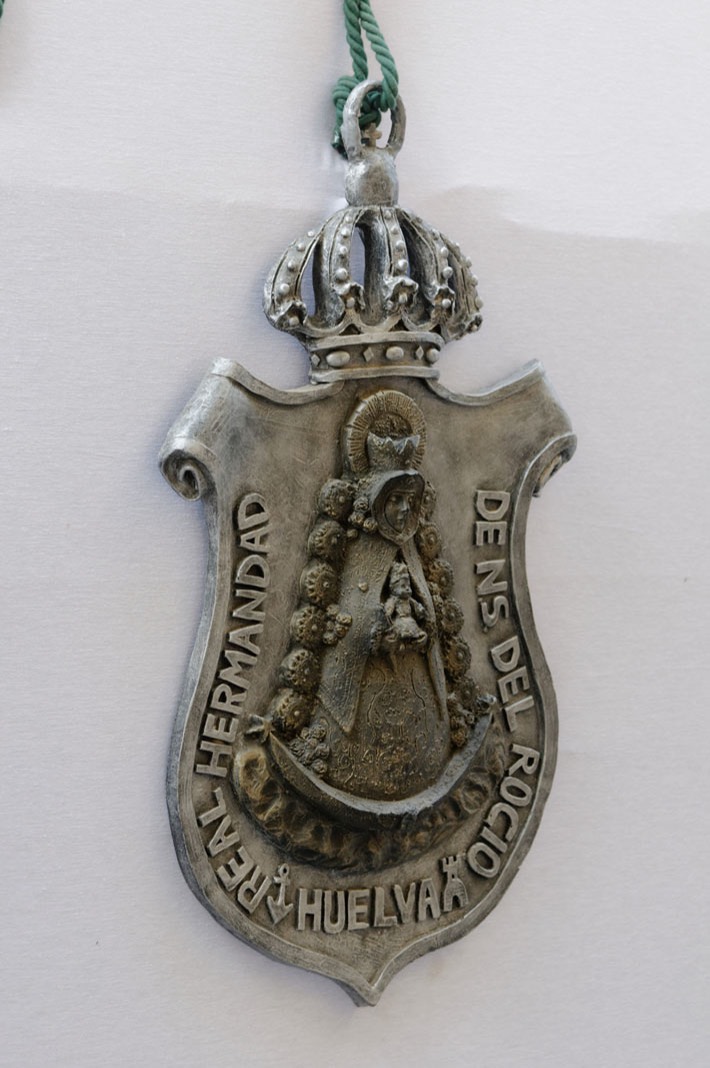
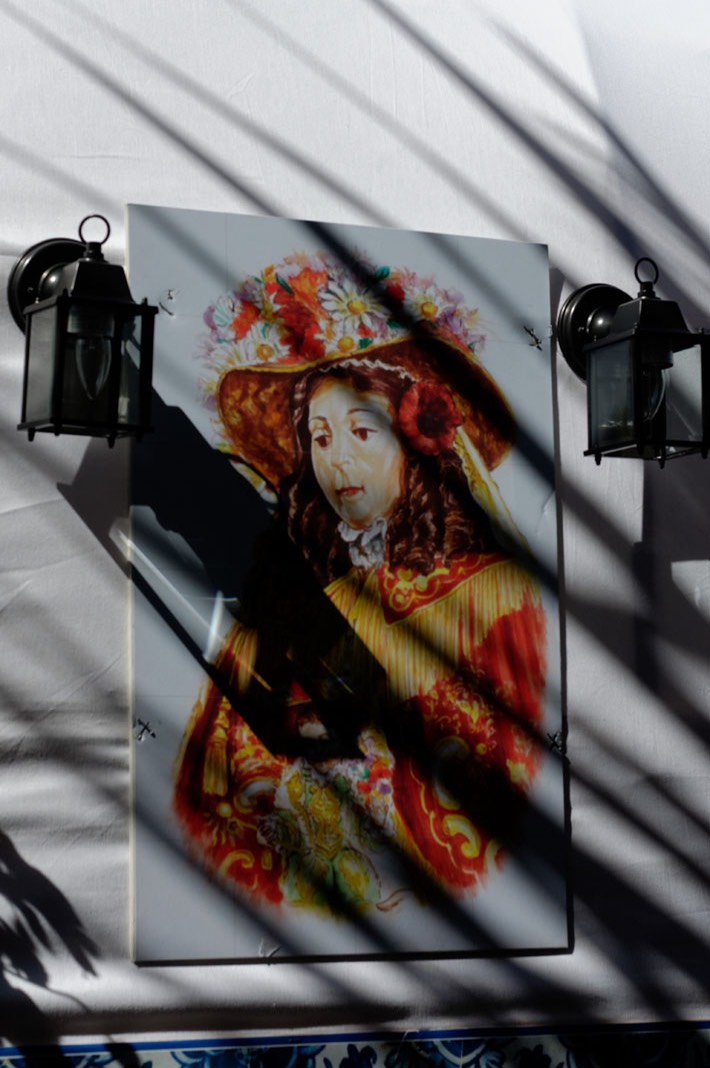
By the time we arrived at the Ayuntamiento, or Town Hall, a huge mass of well-wishers had gathered. The shrine of the virgin that would lead the procession was just about visible over the heads of the assembled crowd.
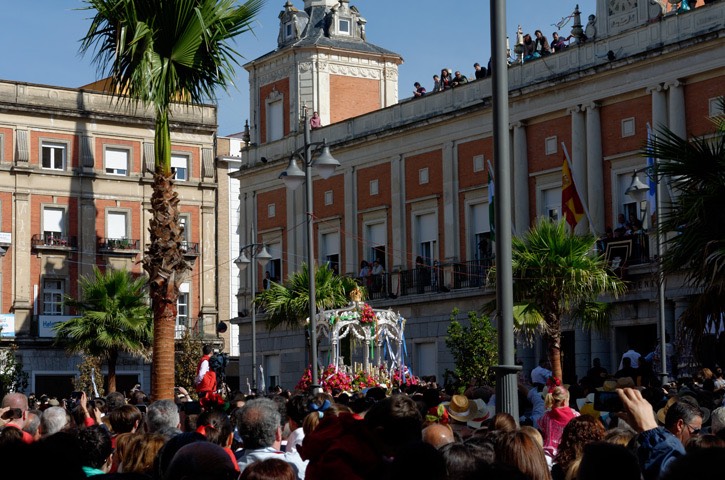
The procession made slow progress through the congested streets, frequently pausing in front of the Town Hall. We waited for the main group of horseback riders, but soon it became clear that they must have set off ahead of the shrine and we had missed them already! But the few pilgrims who rode past on horseback were stunningly turned out in their very best Andalucian finery.
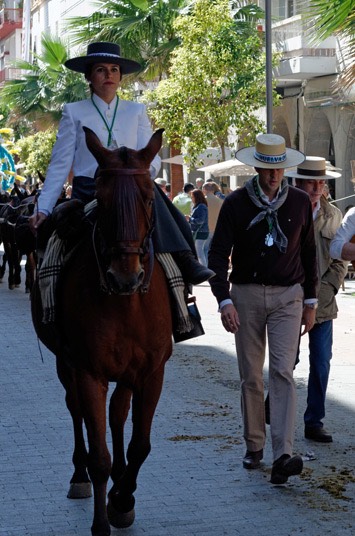
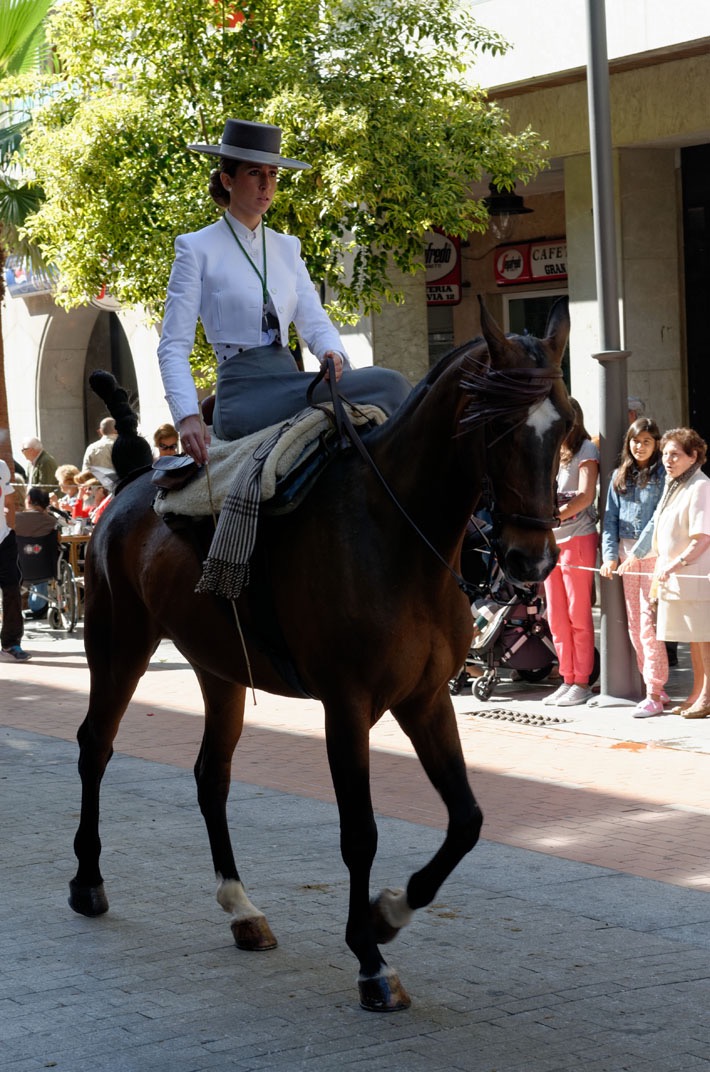
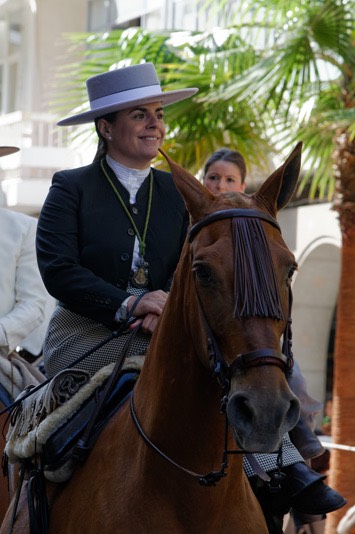
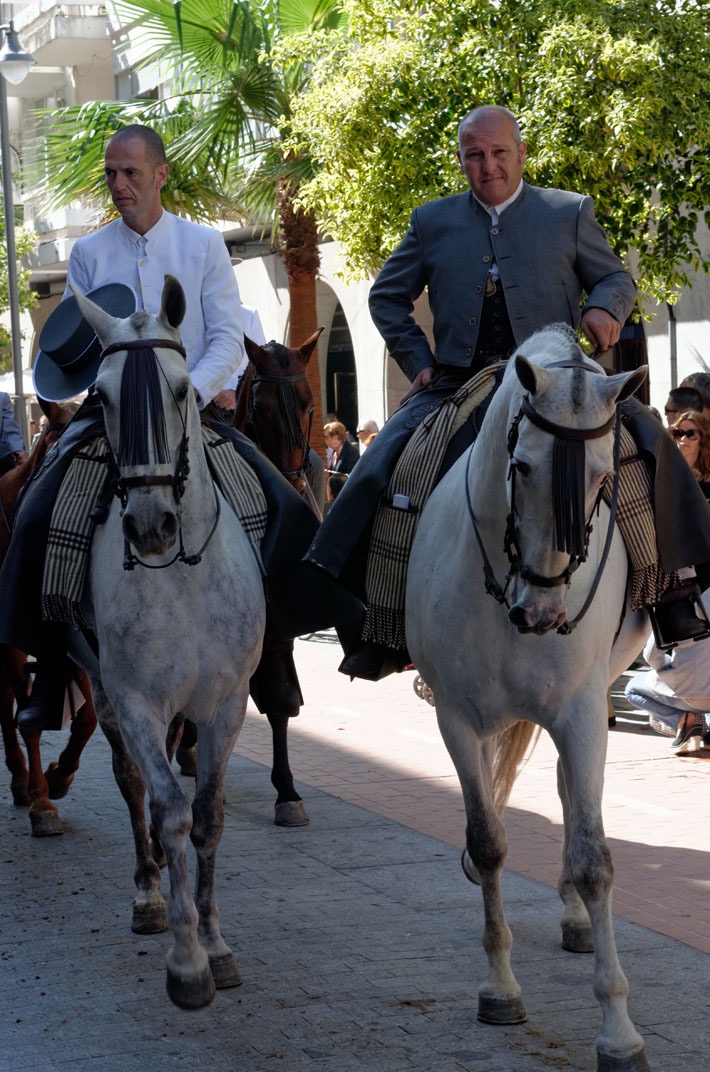
Next in the long procession came wagons pulled by mule trains. Each wagon was marvellously decorated with paper flowers. Some had mottos worked into the decoration; others had images such as the white dove, a symbol representing the virgin of Rocío.
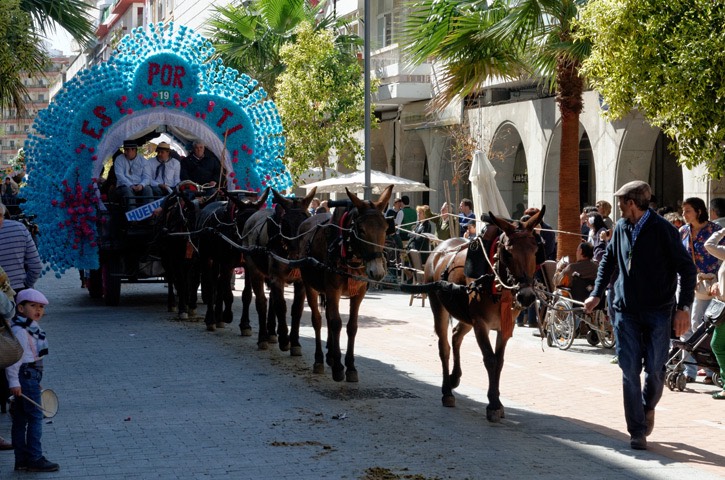
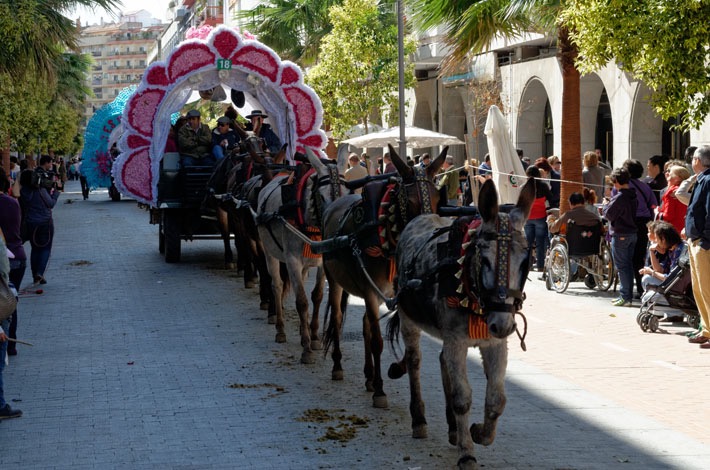
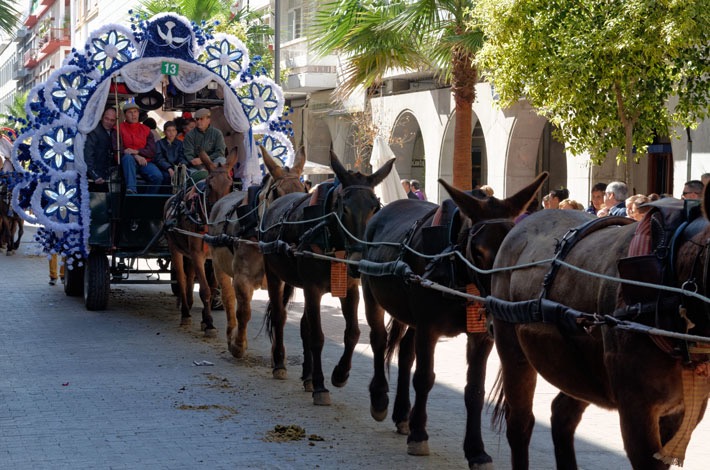
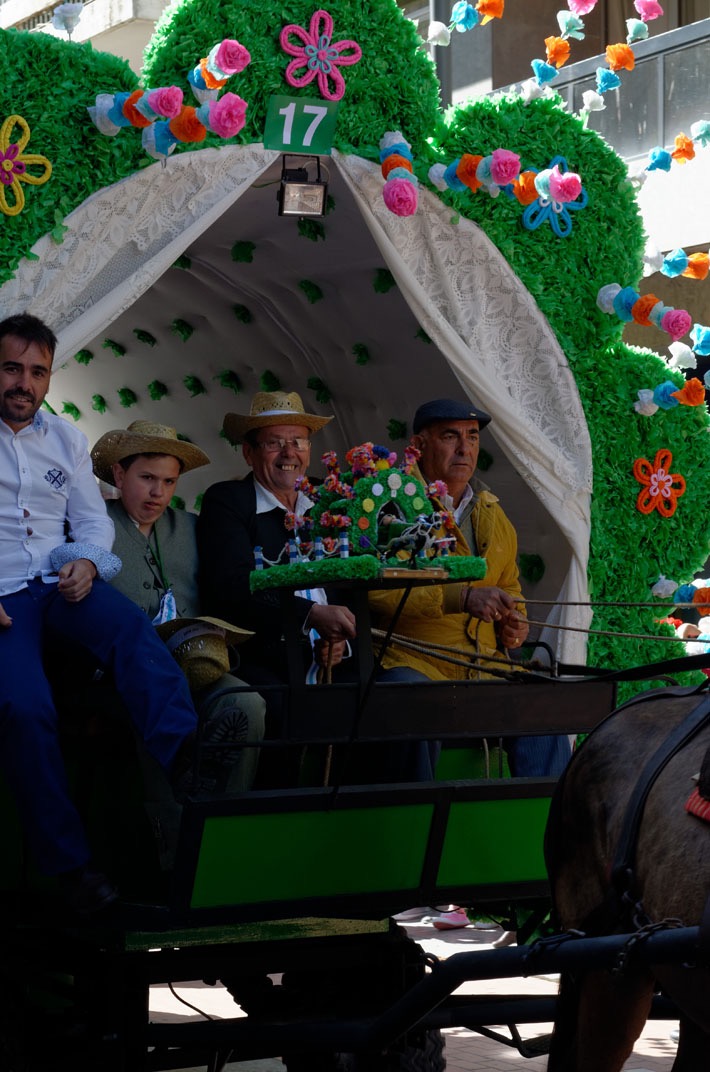
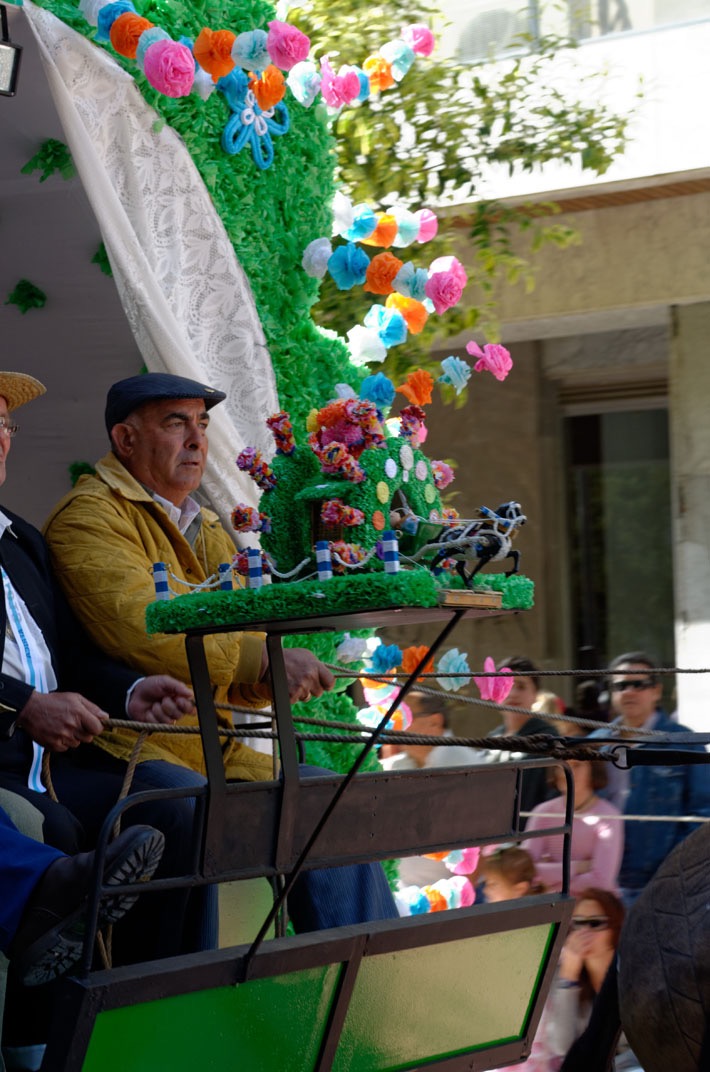
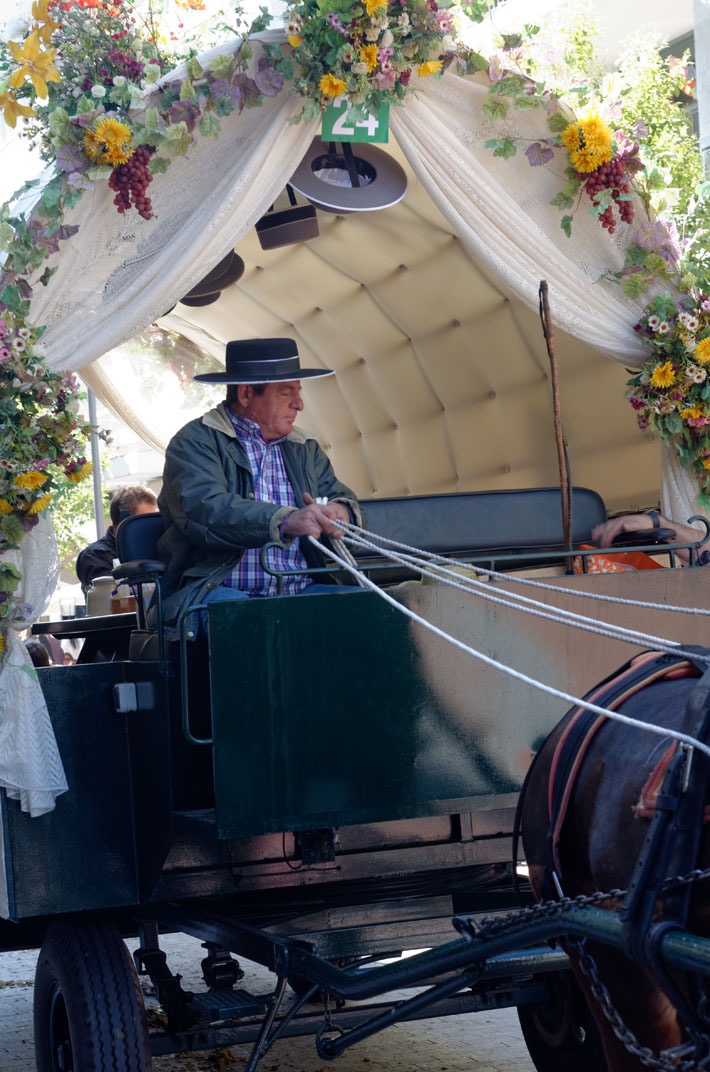
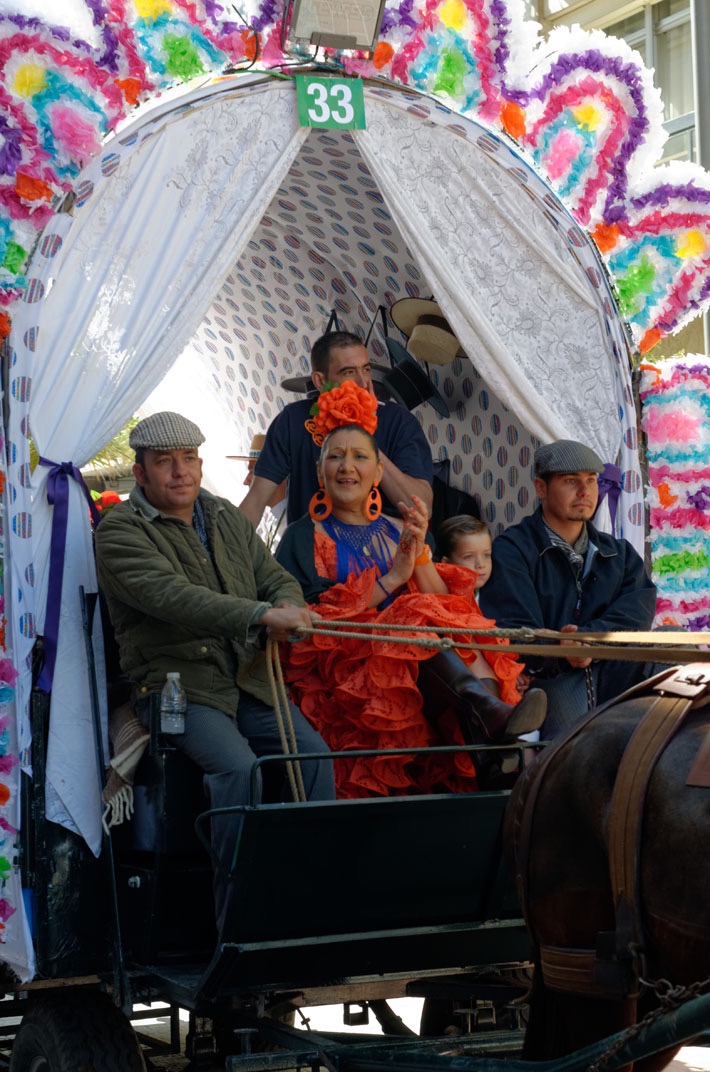
The mules were all immaculately groomed and were generally on their very best behaviour. But some would get restless if they had to wait, so most mule trains had a man walking alongside the lead animal. It often seemed quite difficult to get the mules going again once they had stopped, with hooves slipping on the pavement stones as they struggled to get a grip.
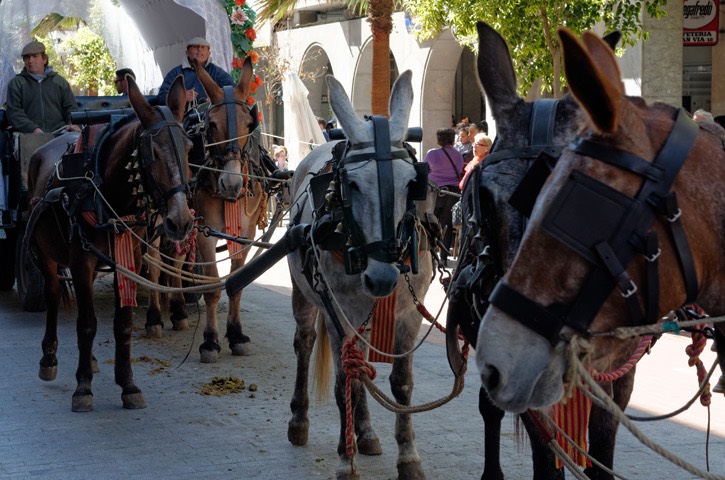
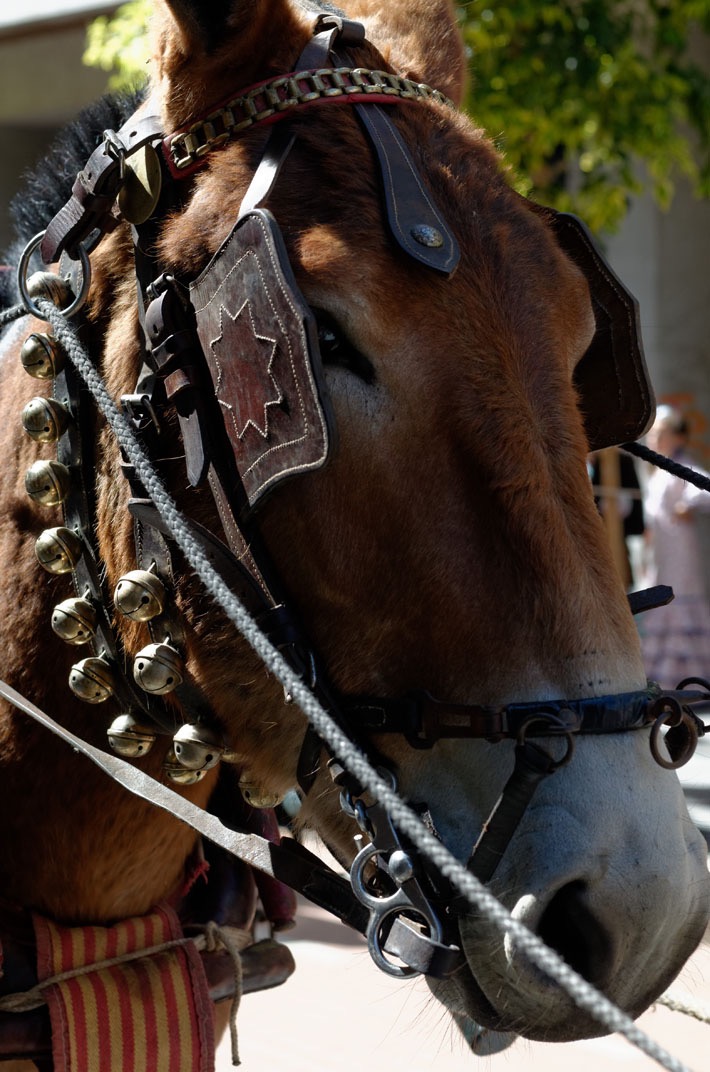
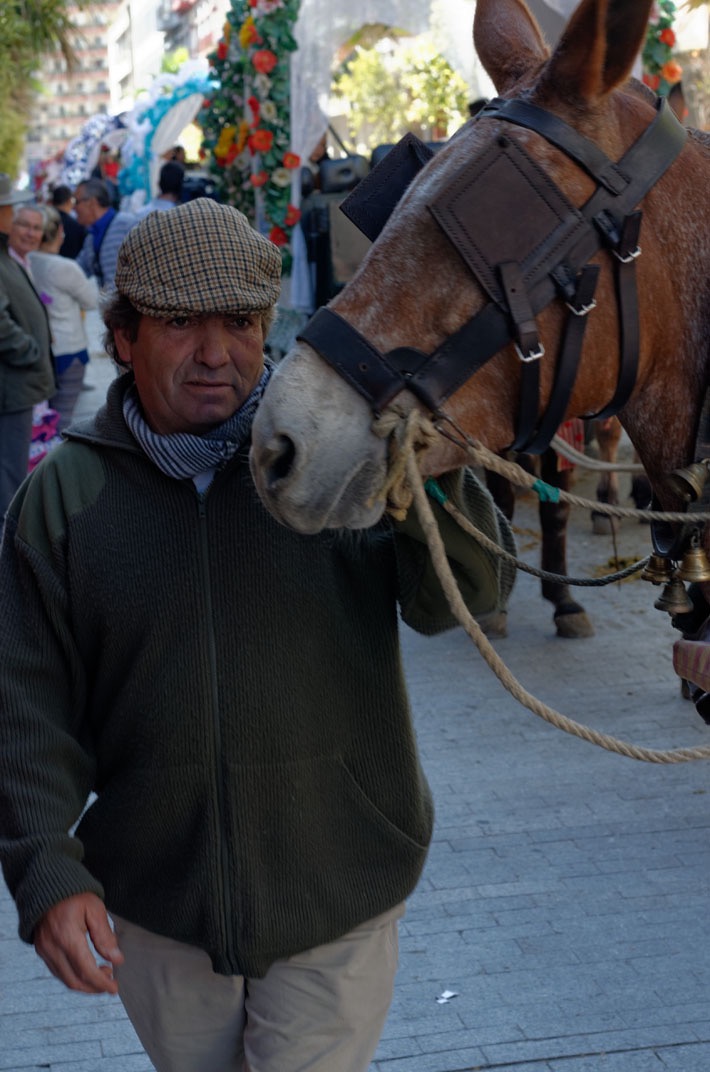
After the mule trains came smaller carriages drawn by one or two mules, and occasionally a lighter vehicle pulled by a pony. All the wagons and carriages were full of happy people, clearly looking forward to the coming days of excitement and fiestas!
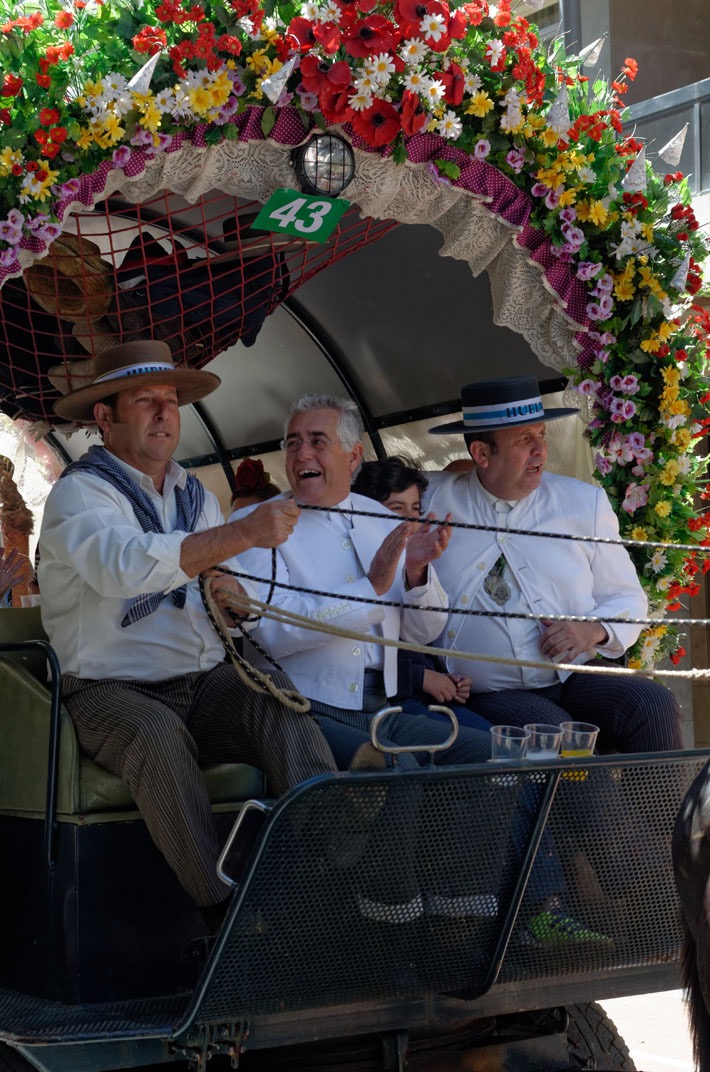
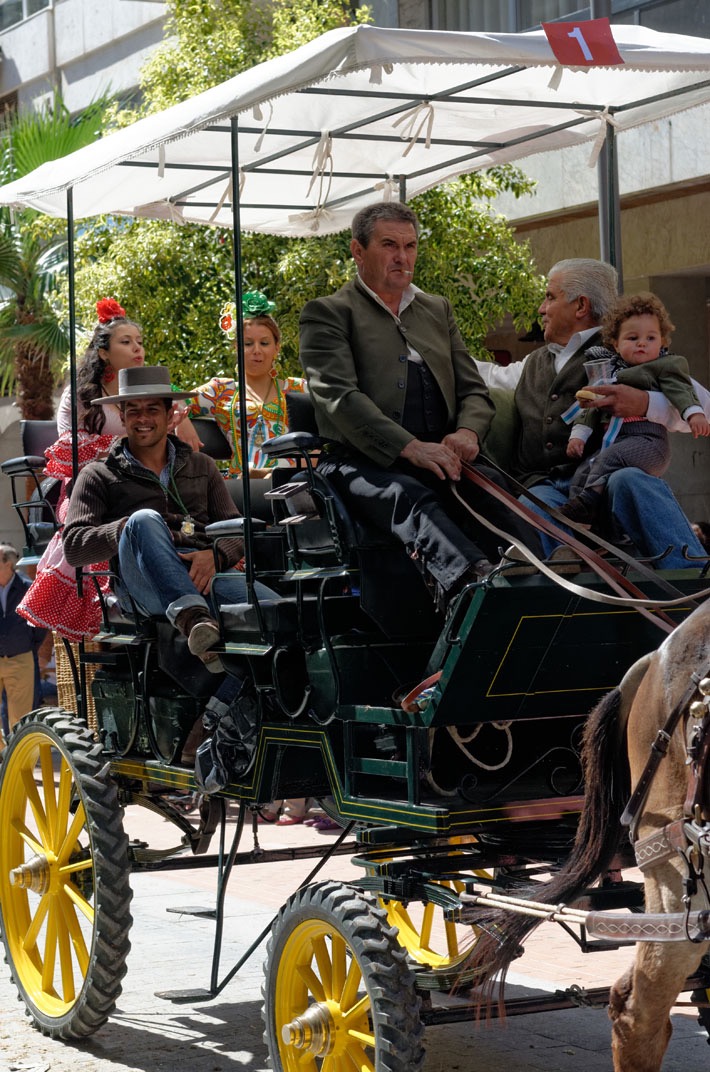
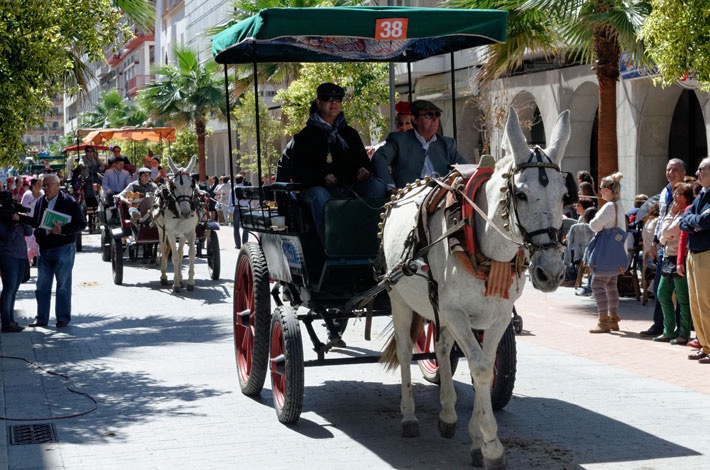
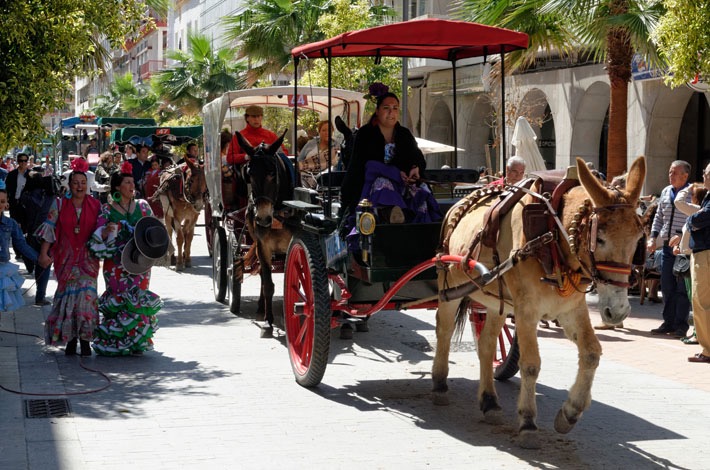
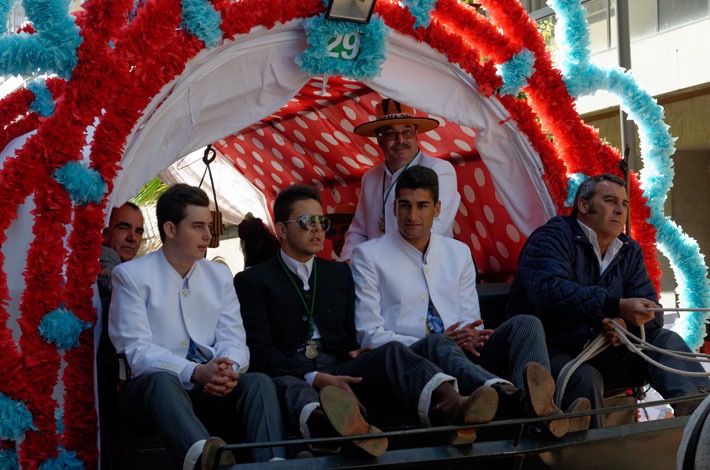
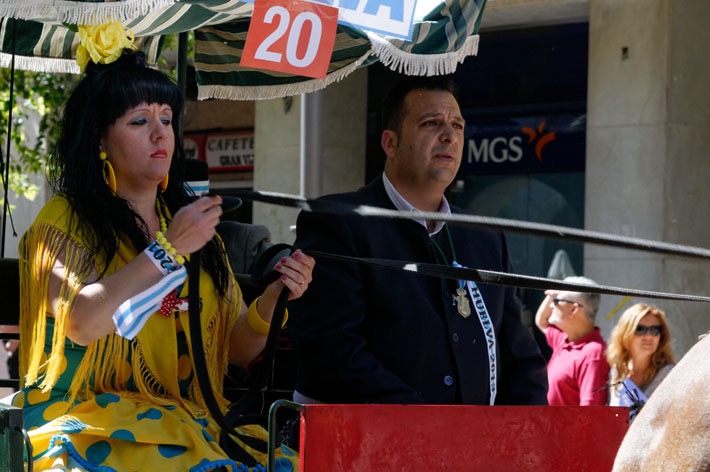
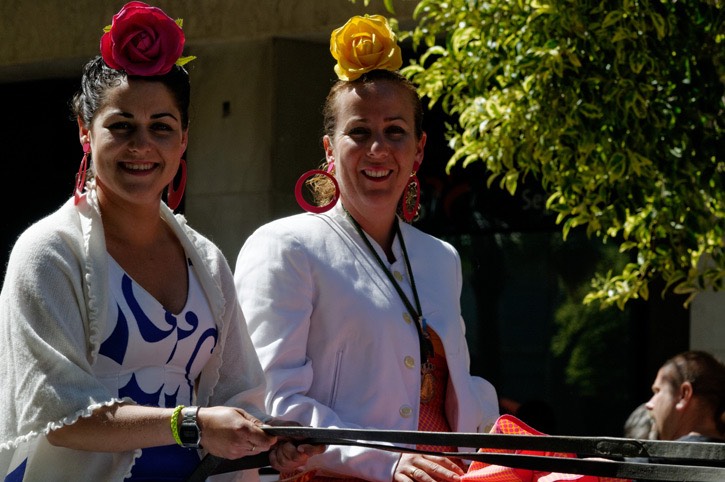
And as usual during Spanish fiestas, it wasn’t just the adults who were involved; there were plenty of children on the carriages, some even driving the mules or ponies!
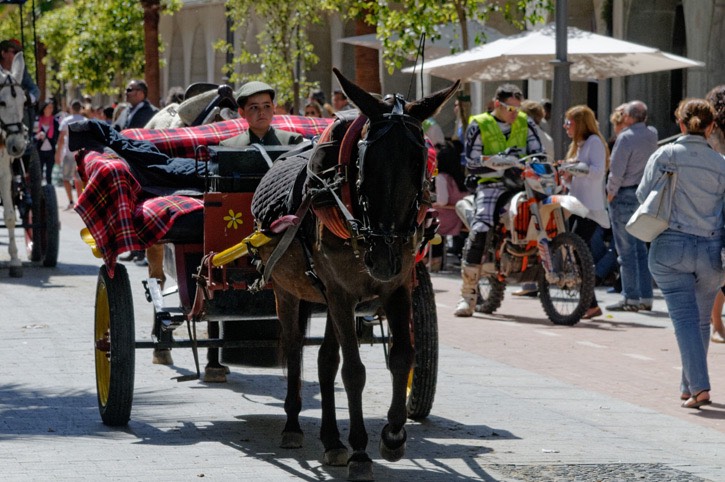
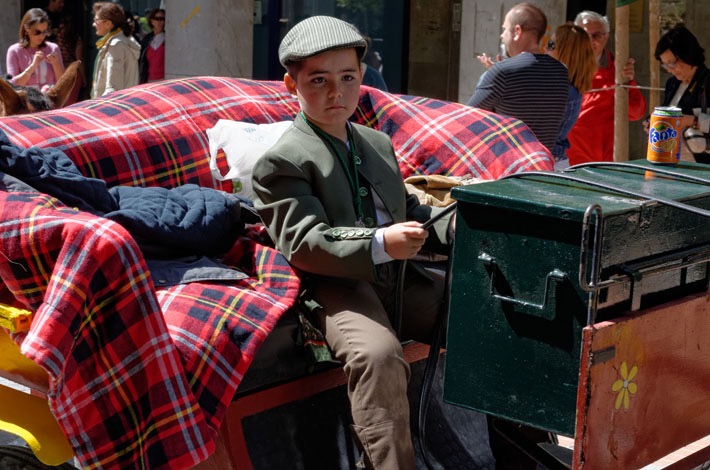
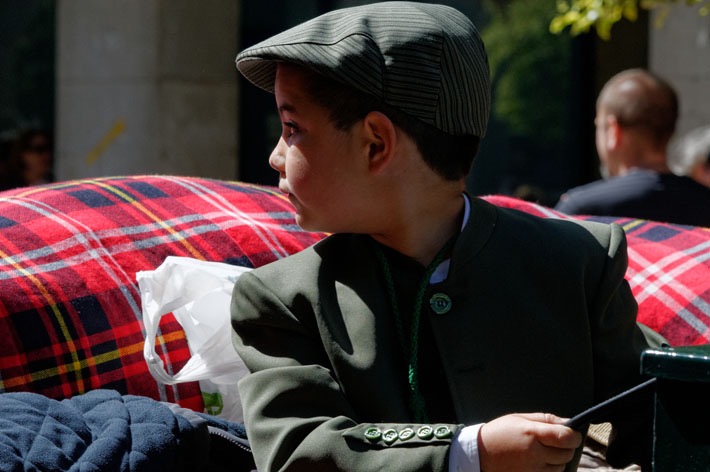
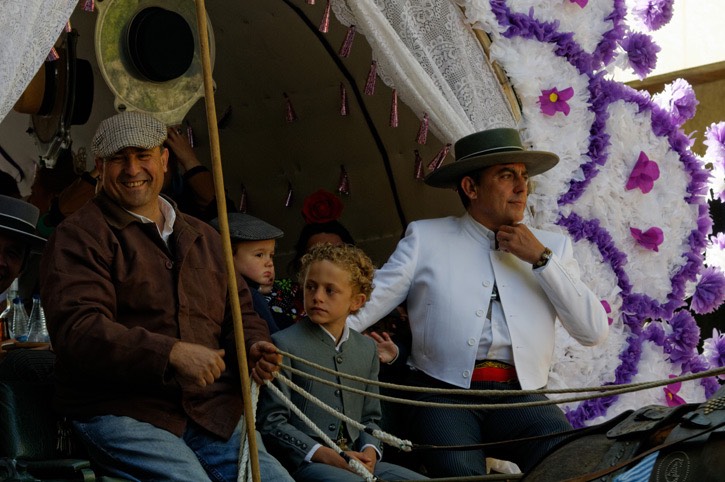
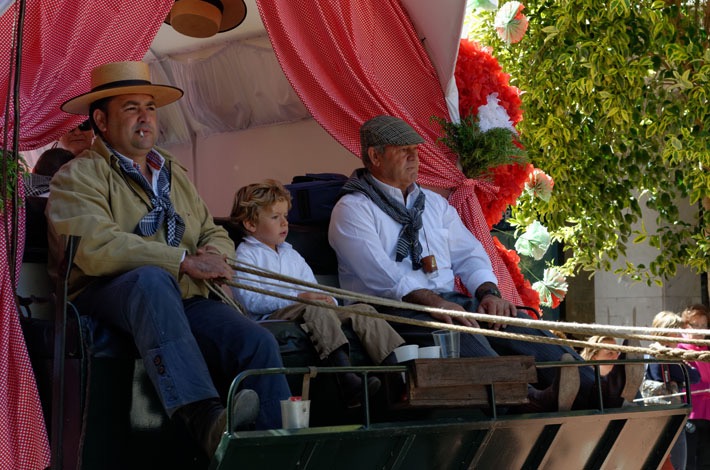
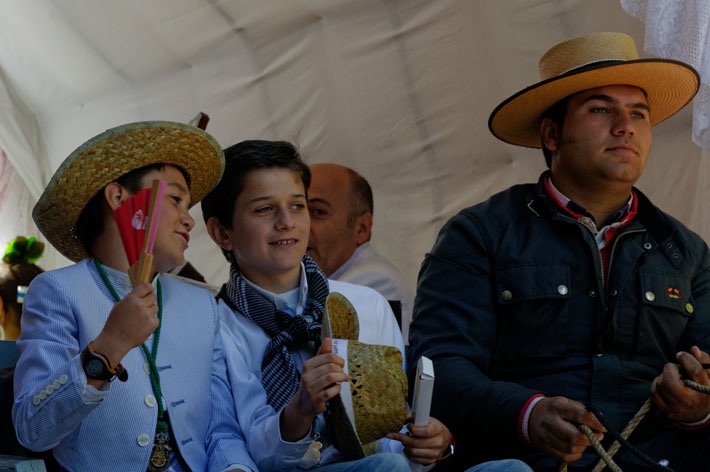
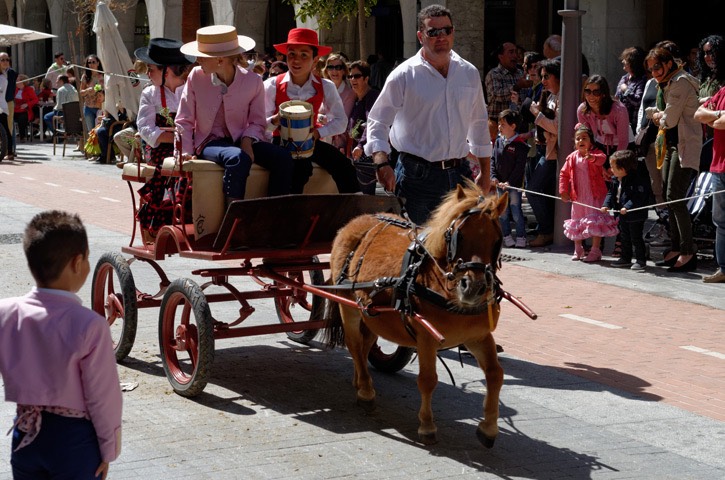
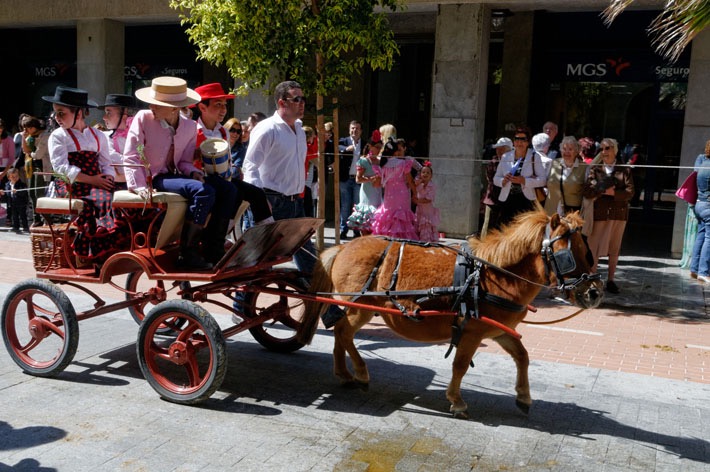
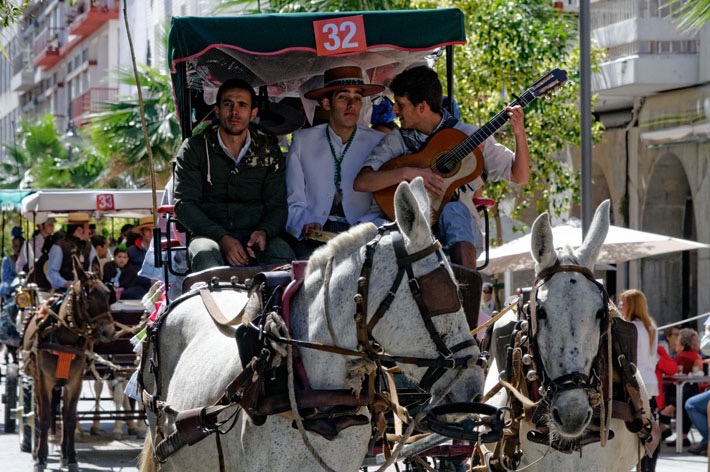
Music is an integral part of the Romería and men, women and children with guitars, drums and tambourines were on pretty much every wagon or carriage, singing at full voice, while others supplied the rhythm section by clapping in that cleverly syncopated Spanish style.
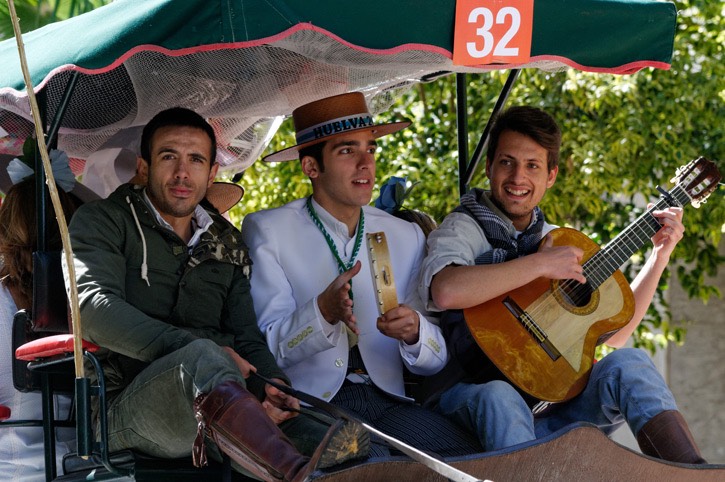
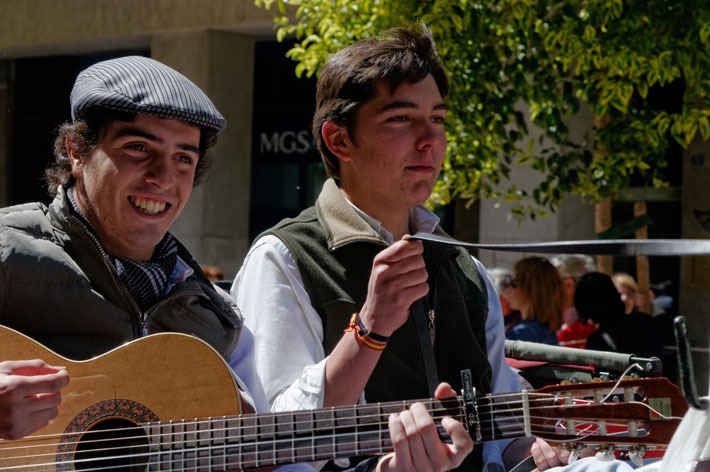
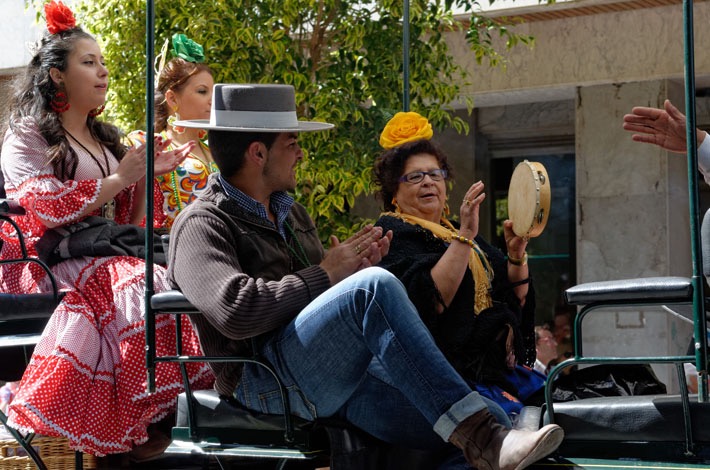
The backs of larger wagons were packed with colourfully dressed pilgrims, sitting on raked tiers of seats, singing their hearts out.
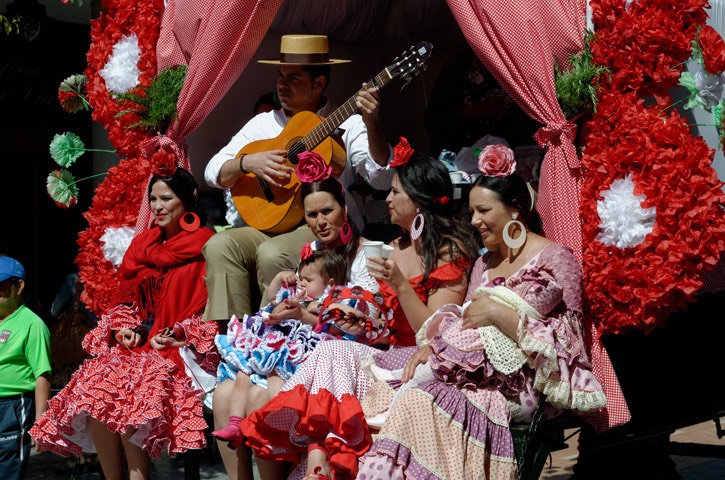
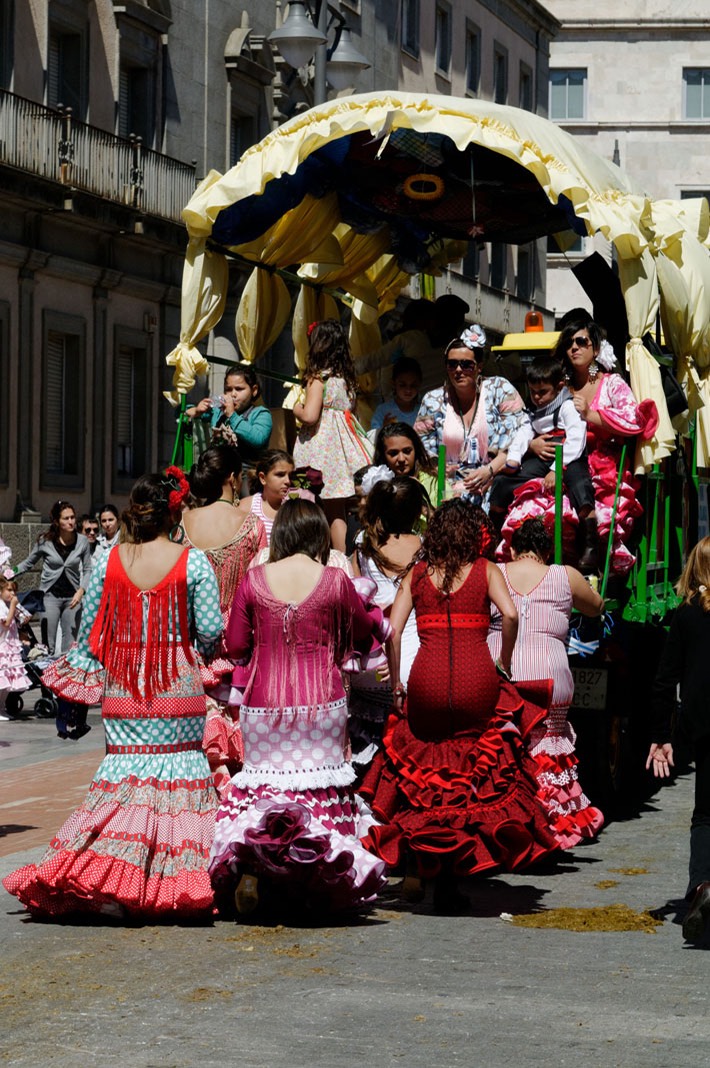
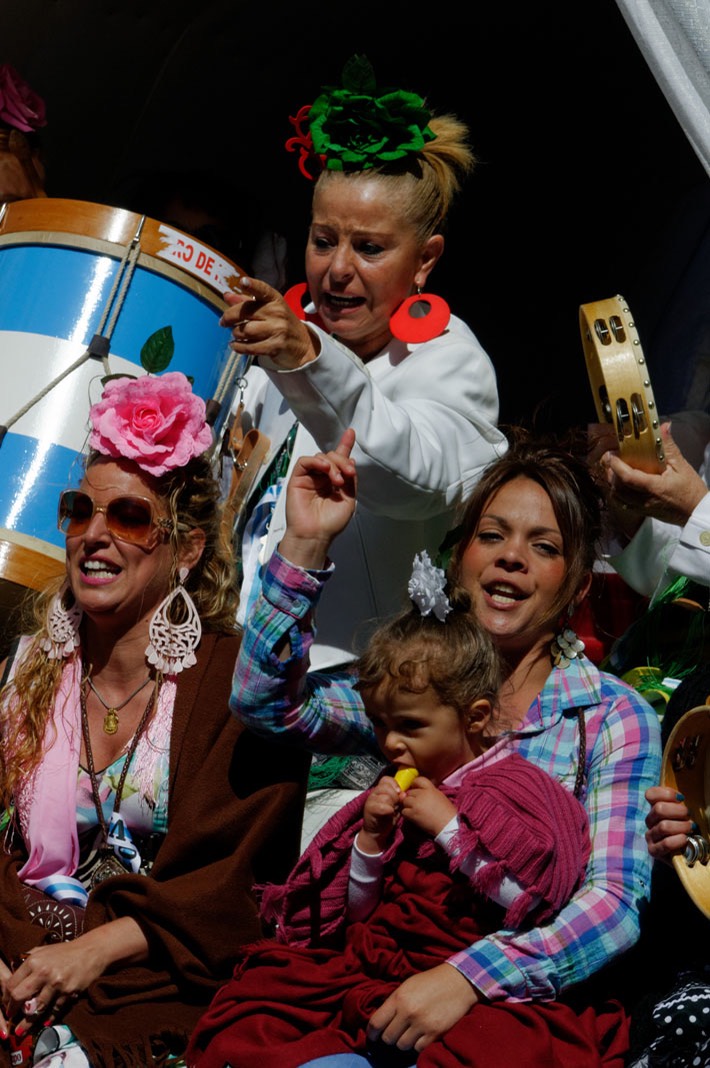
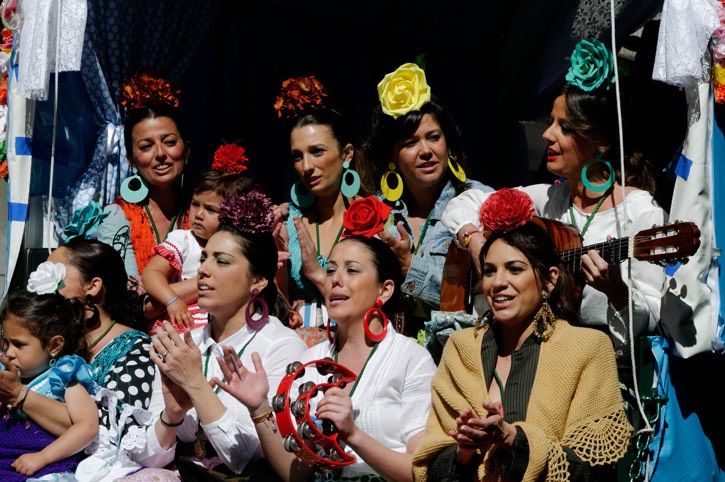
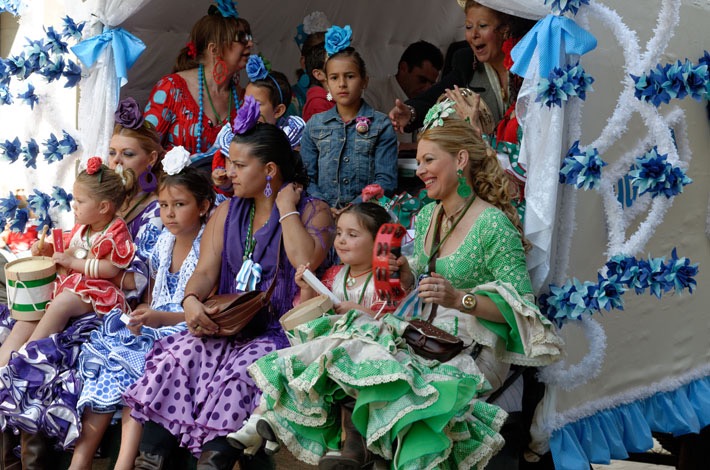
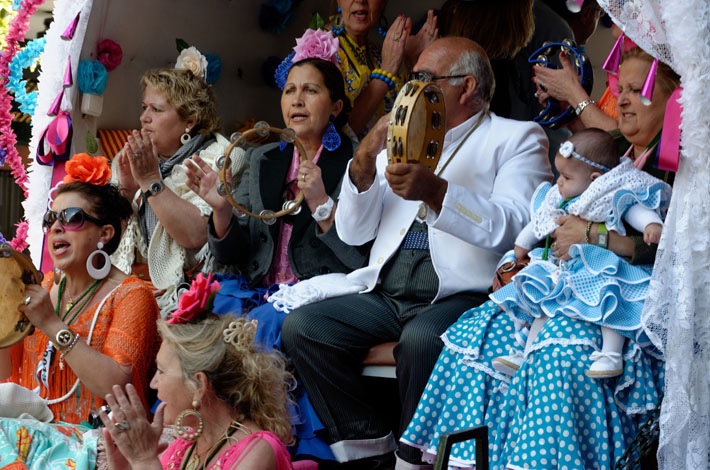
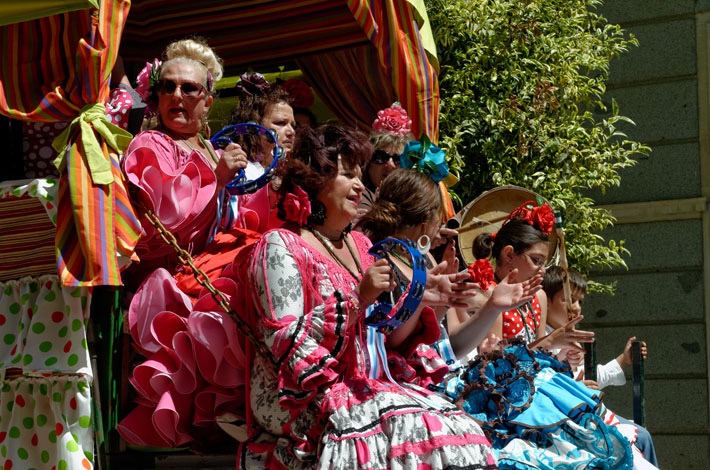
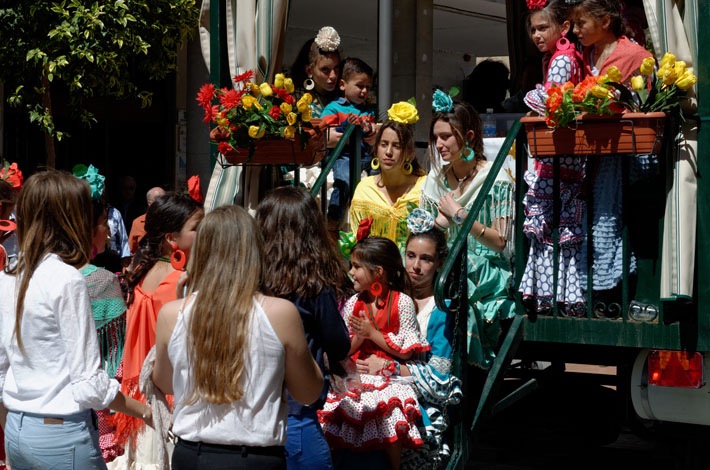
On one wagon we recognised Ana, who also rides at the same stables as ourselves. She and her friends put on a special show for us and invited our companion Elaine to share a bottle of their wine. It took Elaine a few attempts to drink from the bottle Spanish style without it touching her lips, much to the amusement of the ladies on the wagon, who were obviously well practiced in the art!
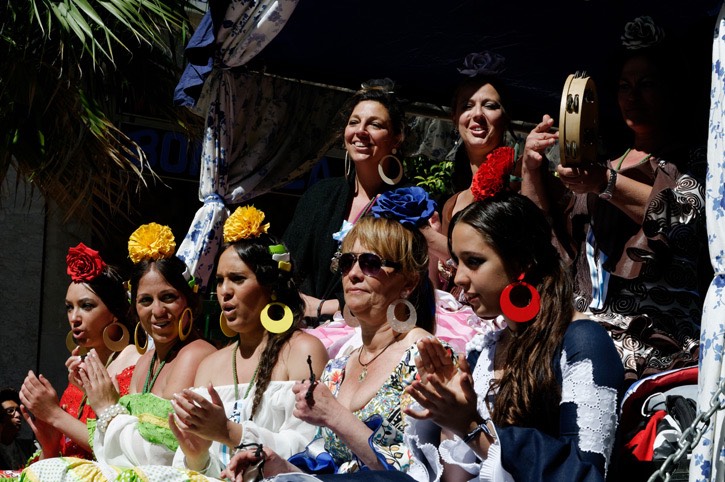
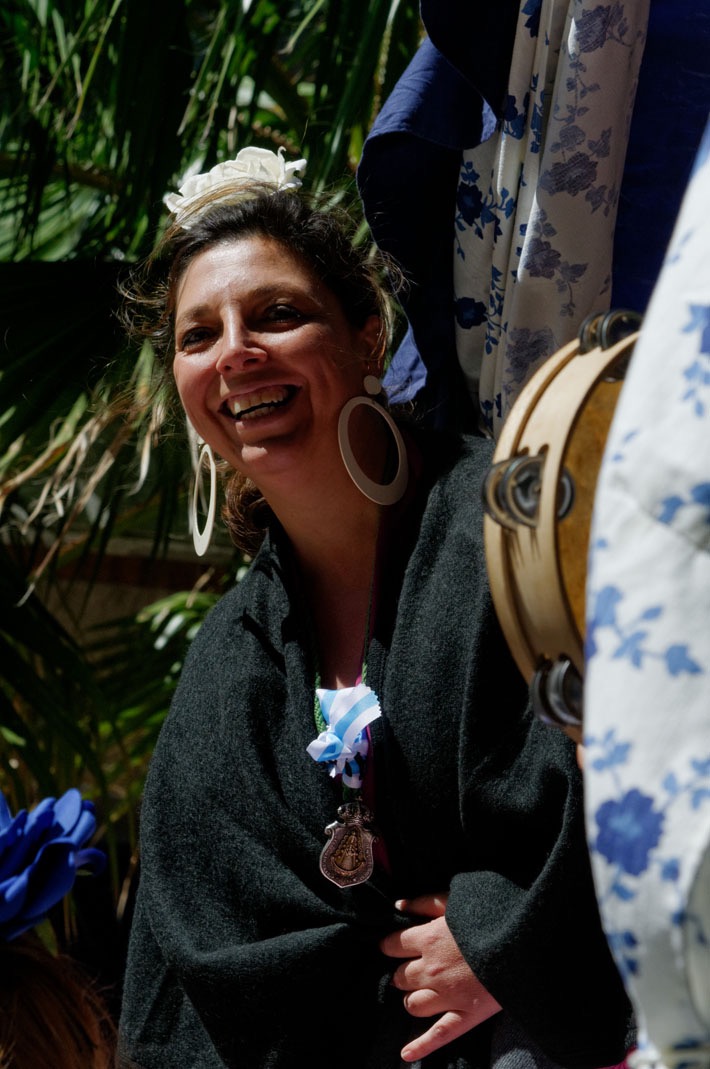
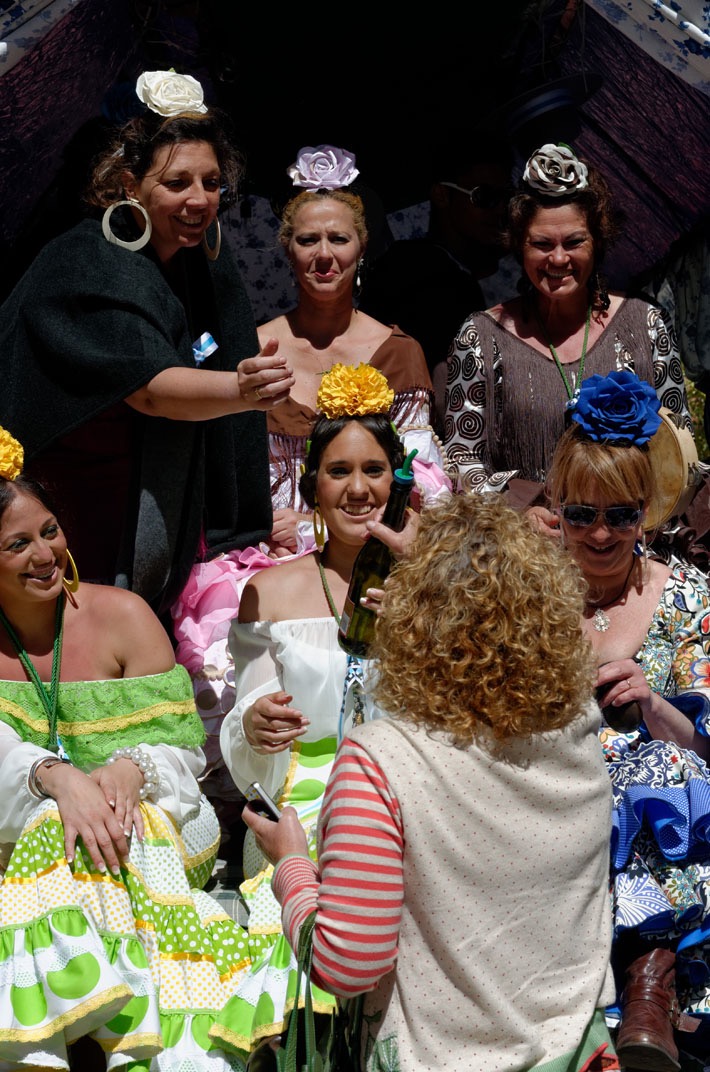
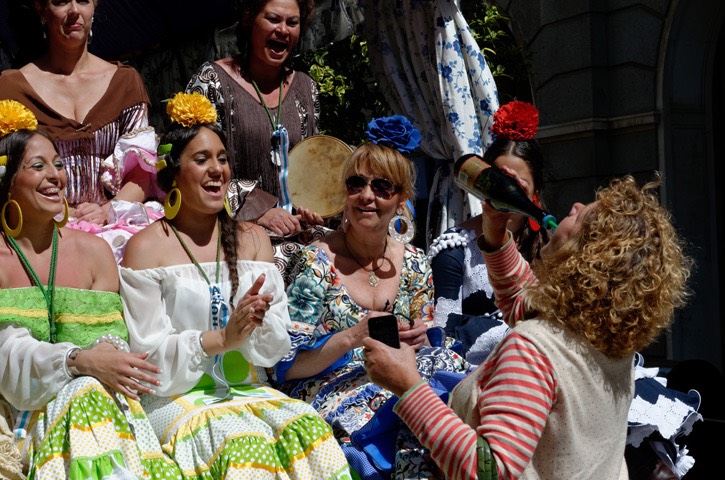

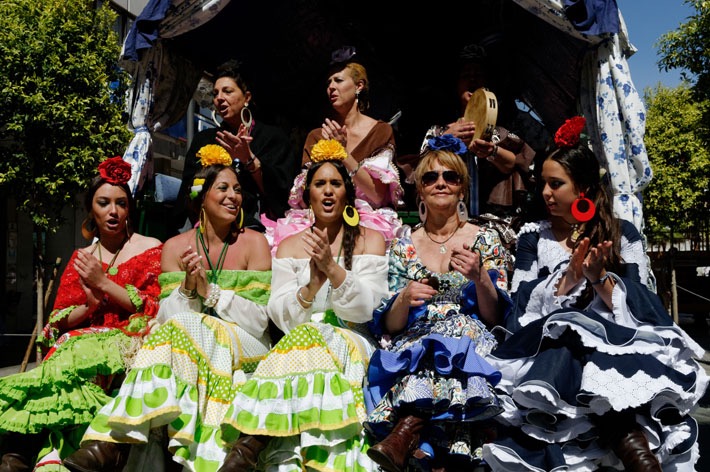
Even young children ride big horses in Spain and look perfectly at ease!
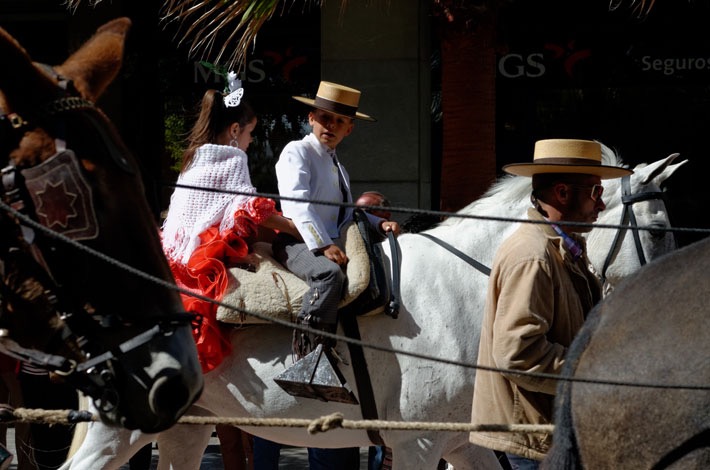
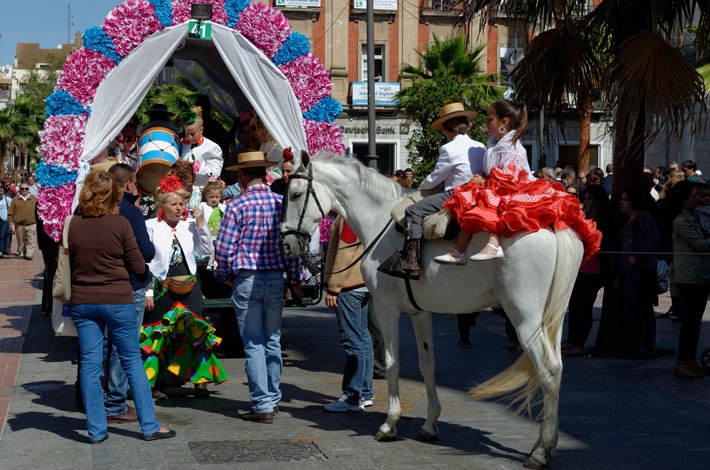
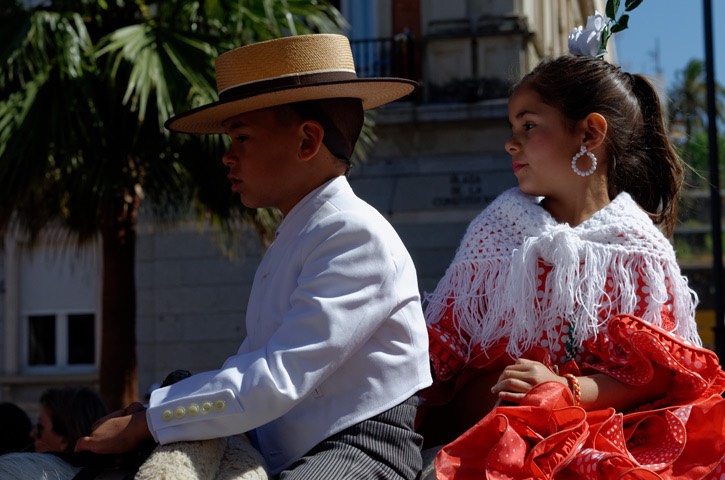
At this early stage of the long pilgrimage, many people were walking on foot. The women wore beautiful Flamenco dresses and accessories of large earrings, with flowers and combs in their hair. All pilgrims wear a medallion of the virgin around their necks. One couldn’t imagine them walking for long in those dresses, but there was plenty of space left for them in the wagons.
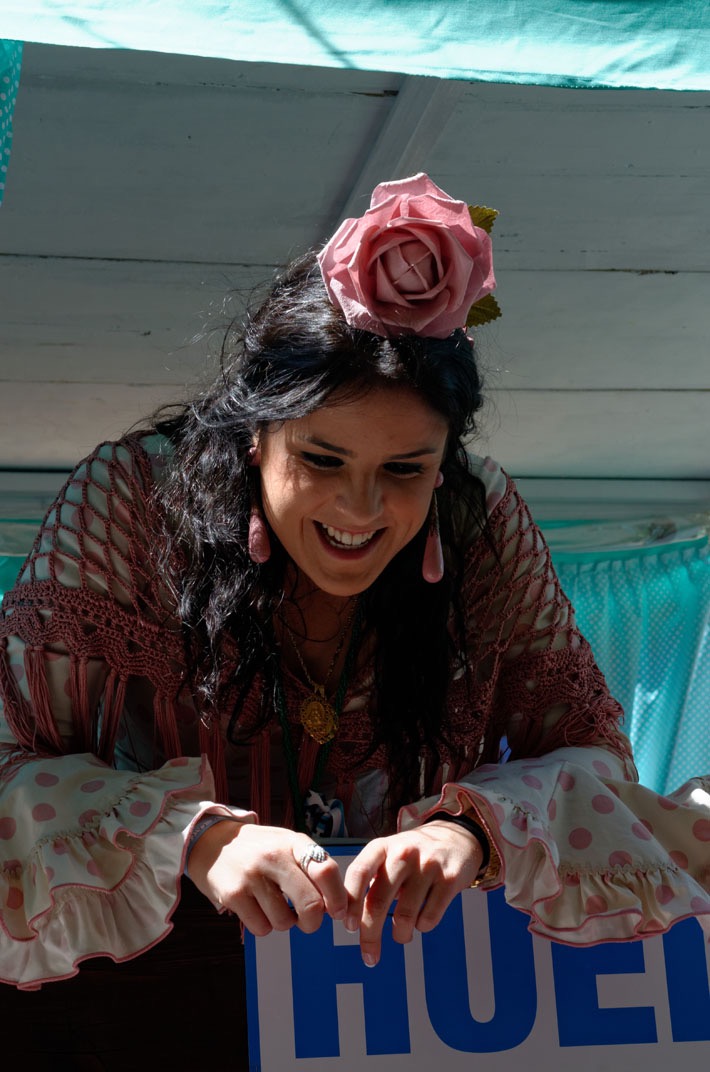
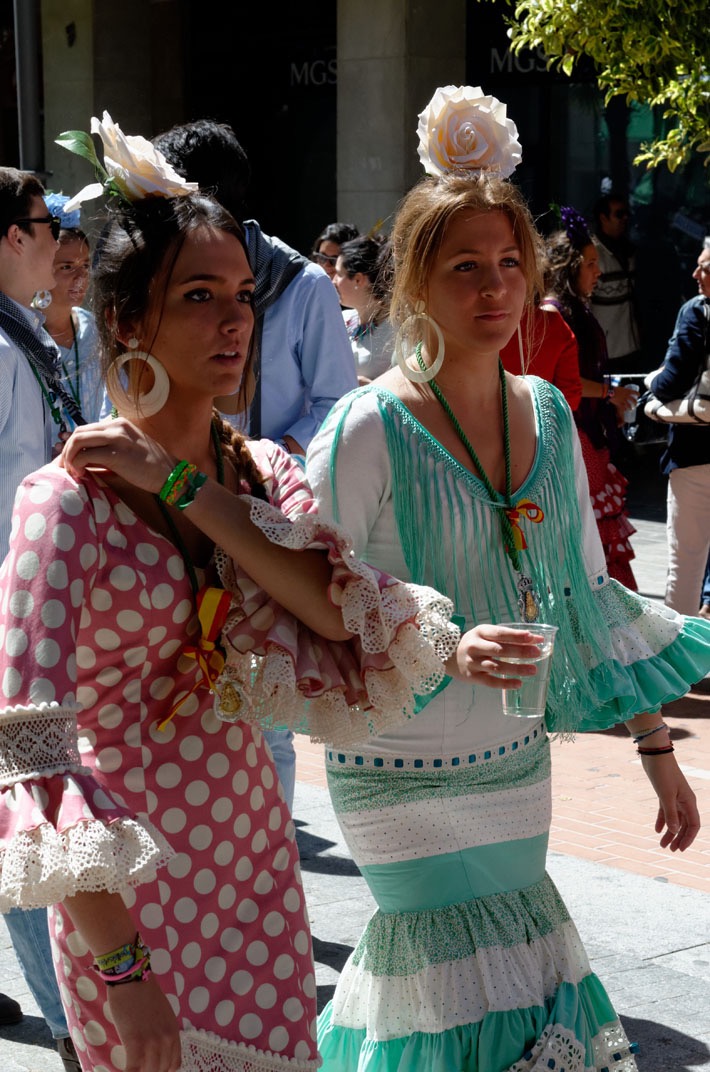
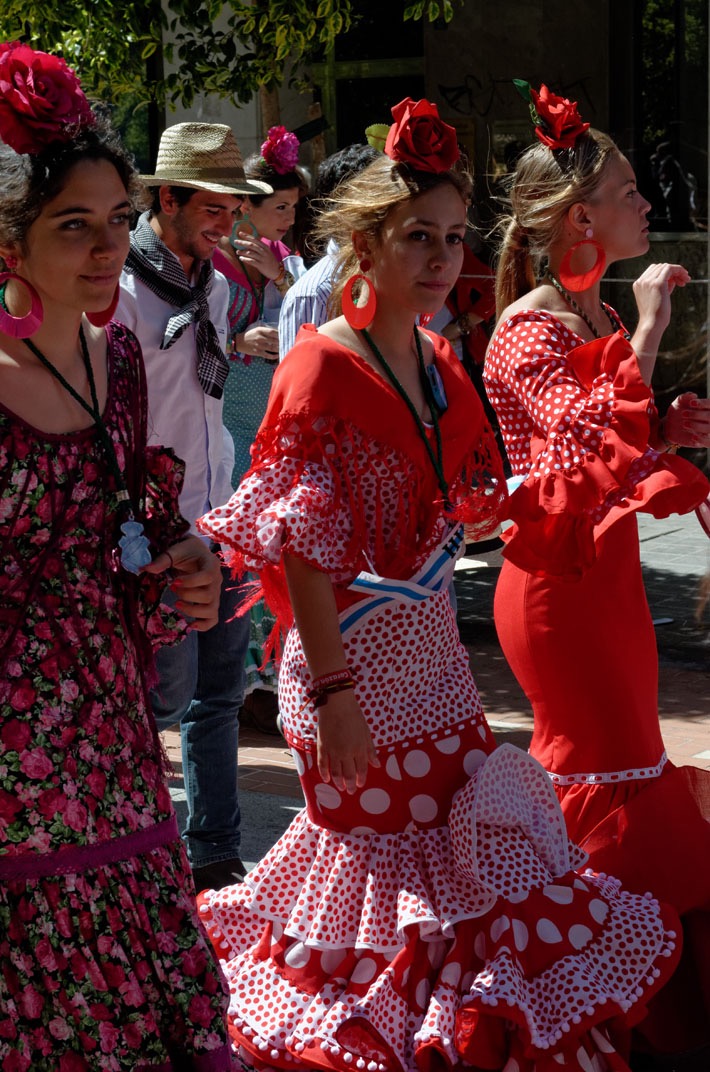
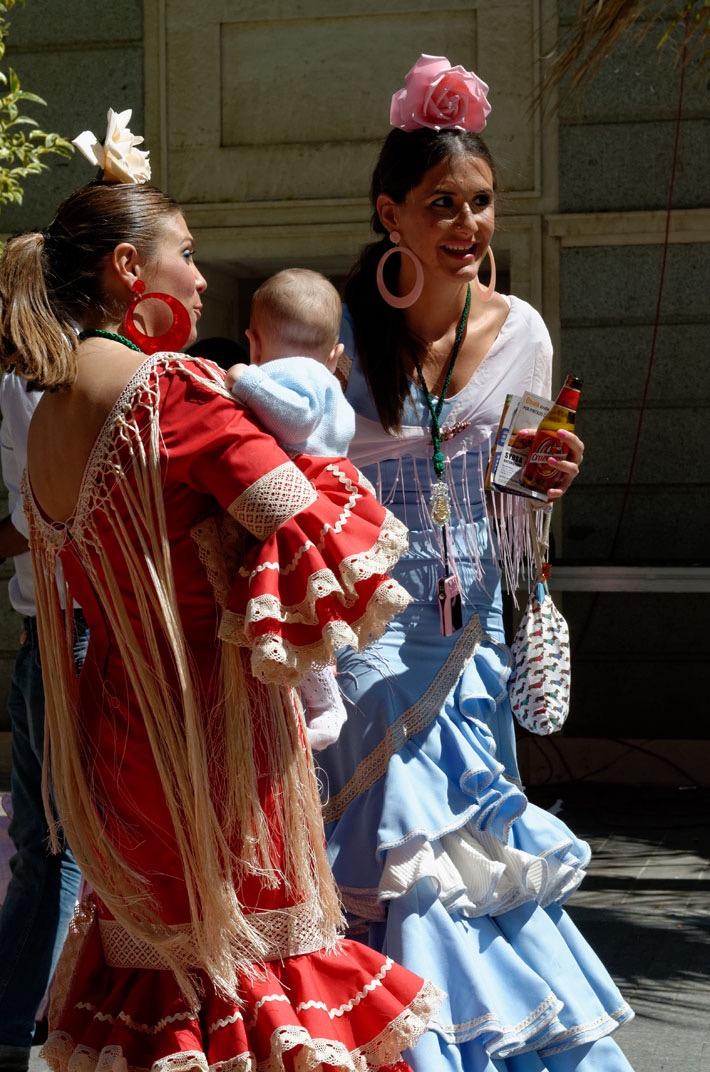
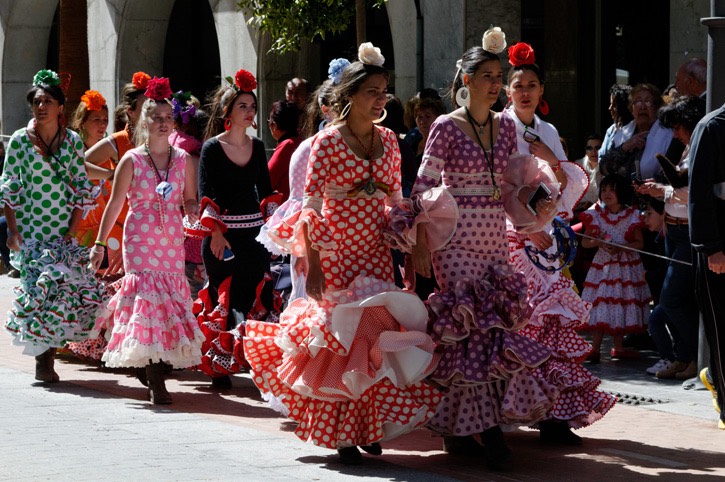
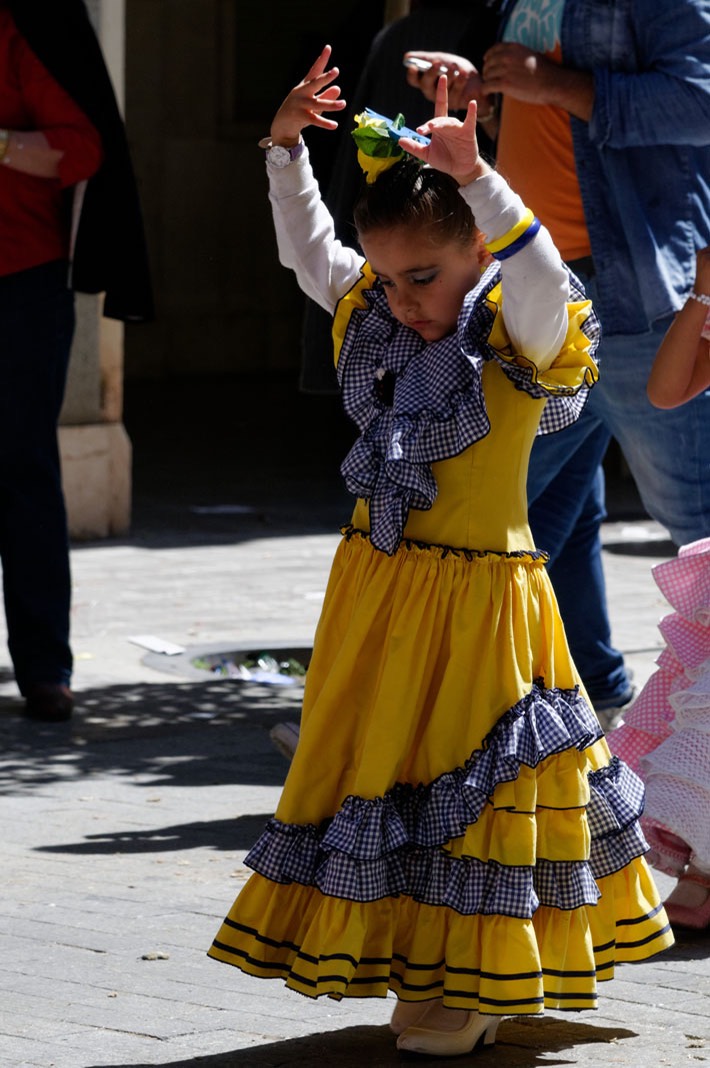

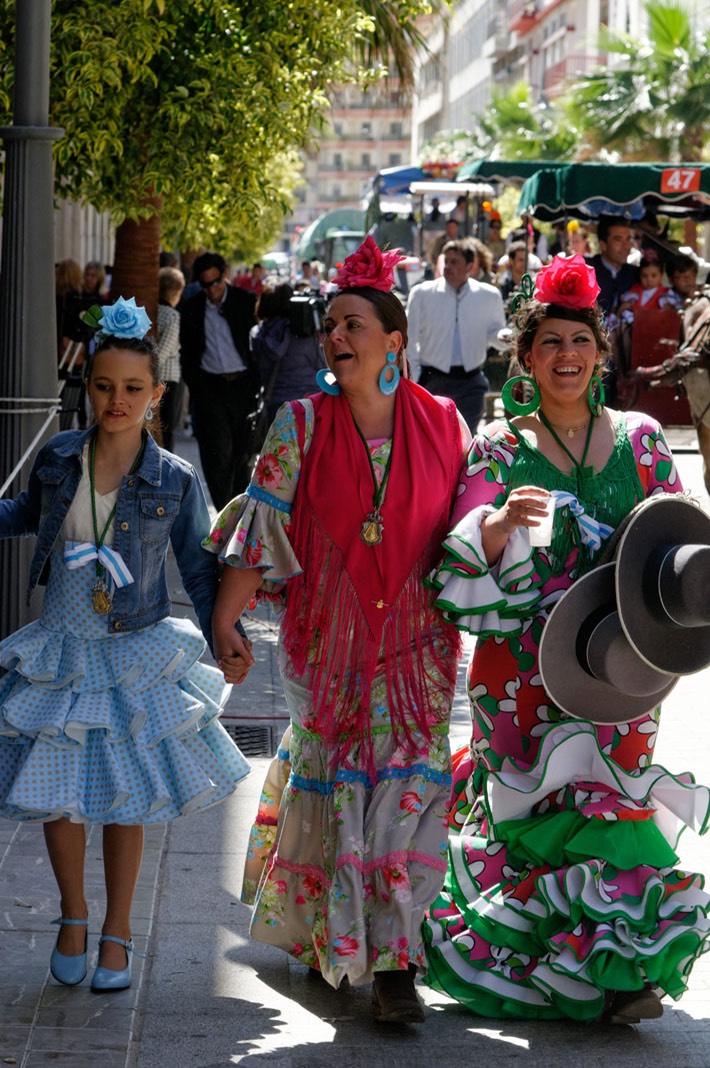
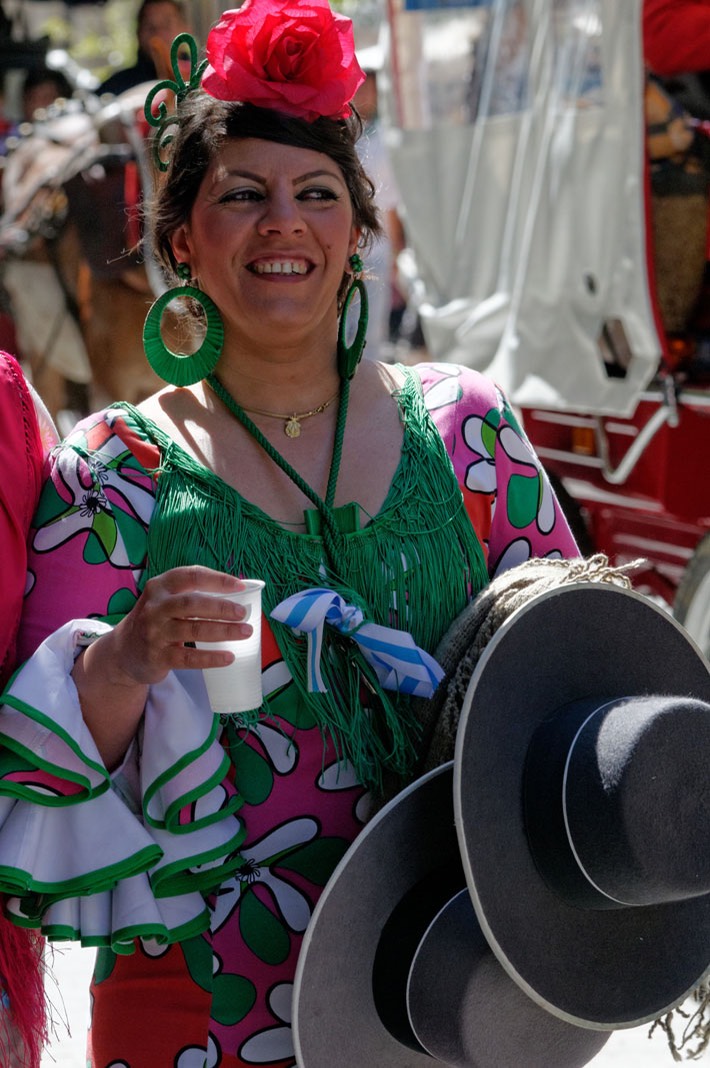
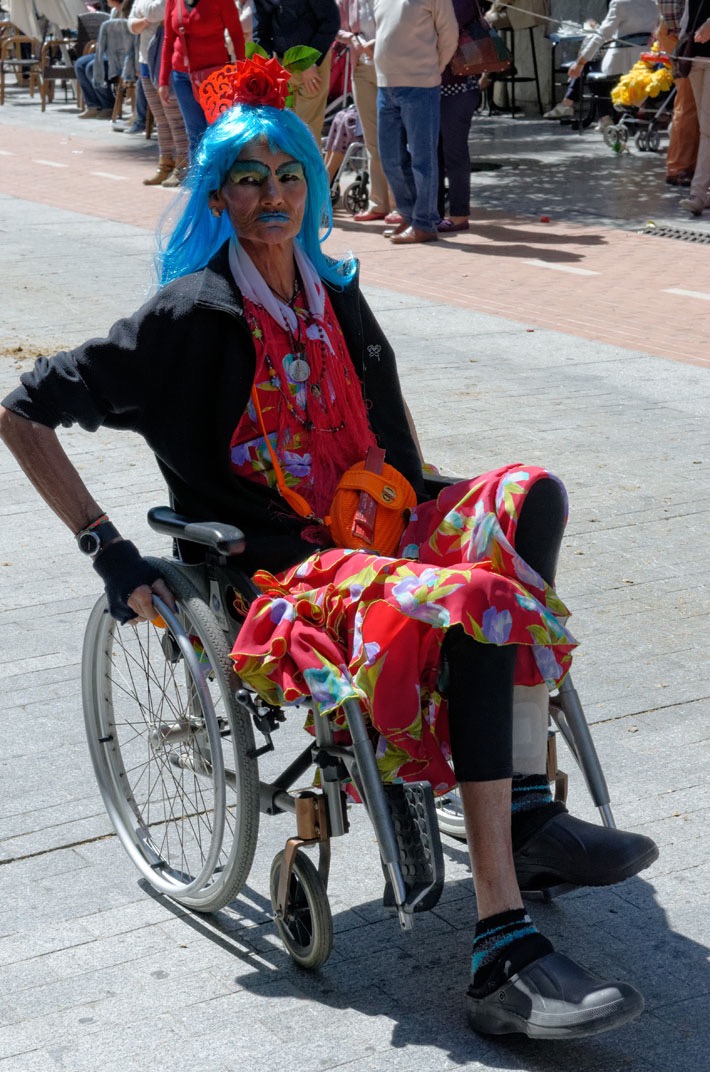
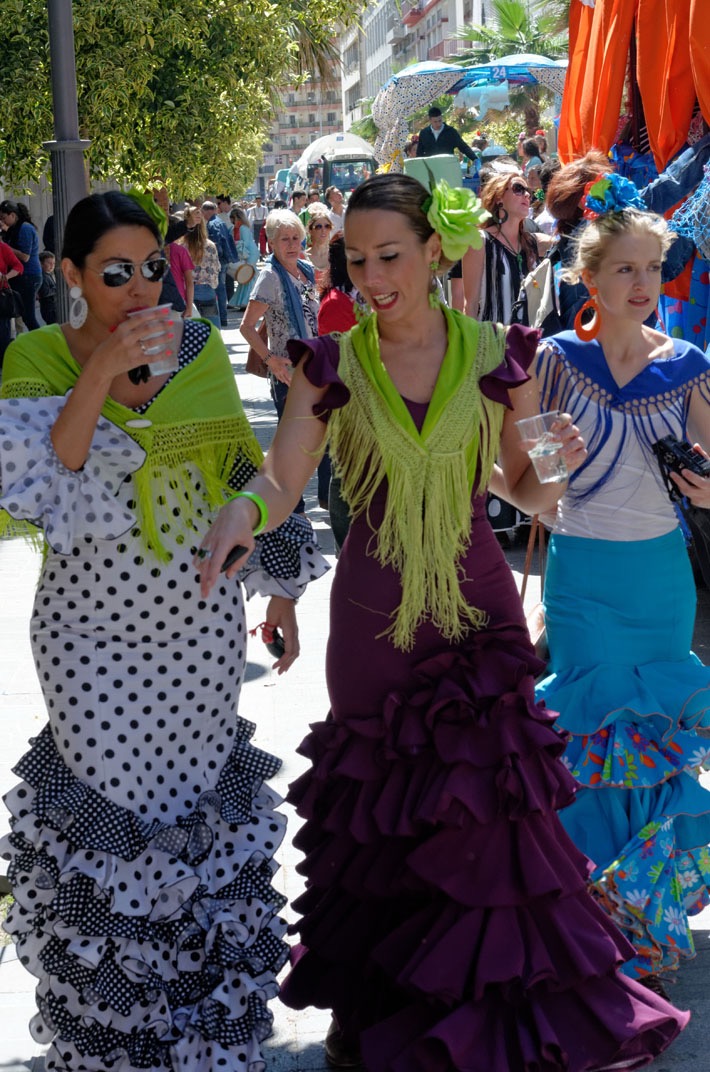
Men on horseback tend to wear the traditional short cut jackets and trousers, but those on foot were often dressed more casually. One thing they had in common were the flat-brimmed hats, which during the Romería are often adorned with a hatband displaying the name of their brotherhood.
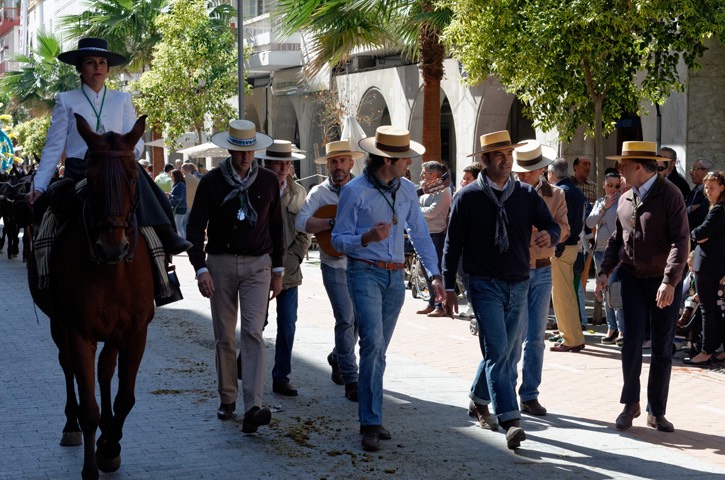
The end of the procession was made up by large wagons pulled by tractors, crammed full with all the camping equipment and kit needed for the long trek to El Rocío. There were also many more happy passengers on board, for whom the party was just starting!
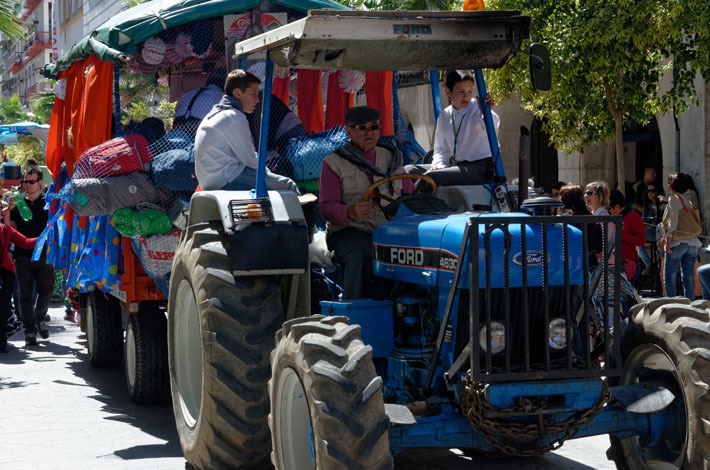
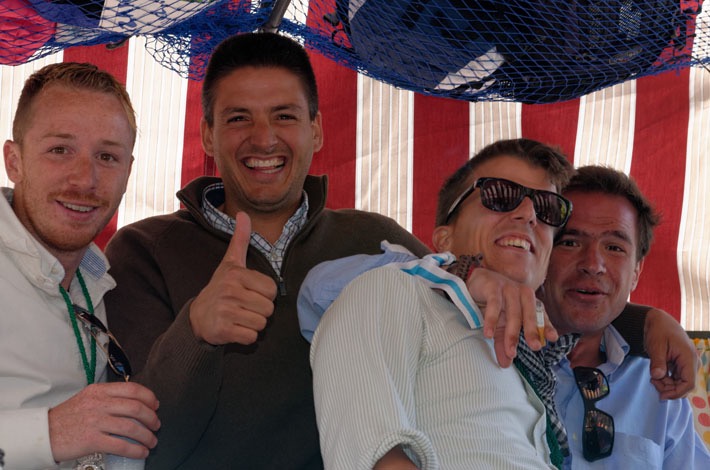
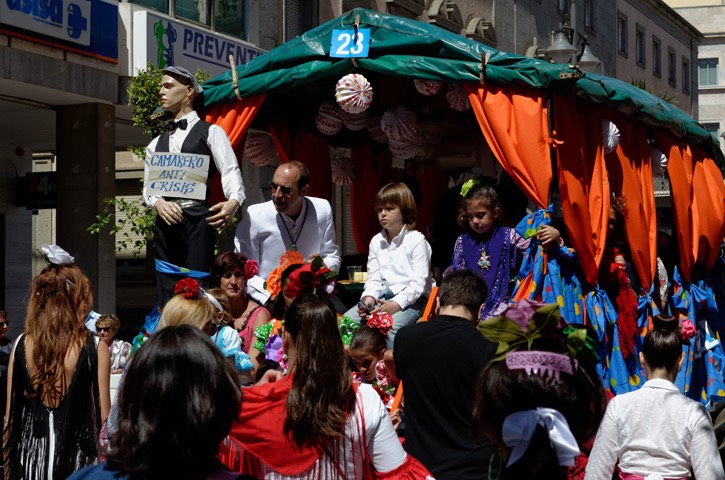
Despite having missed nearly all the riders in the procession, it took a good couple of hours for all the carriages and wagons to pass us. Together with our friends Angus and Elaine we had a great time, but we were also pretty exhausted as it was a hot day. The pilgrims certainly had a long, hot and dusty trail ahead of them before reaching El Rocío.
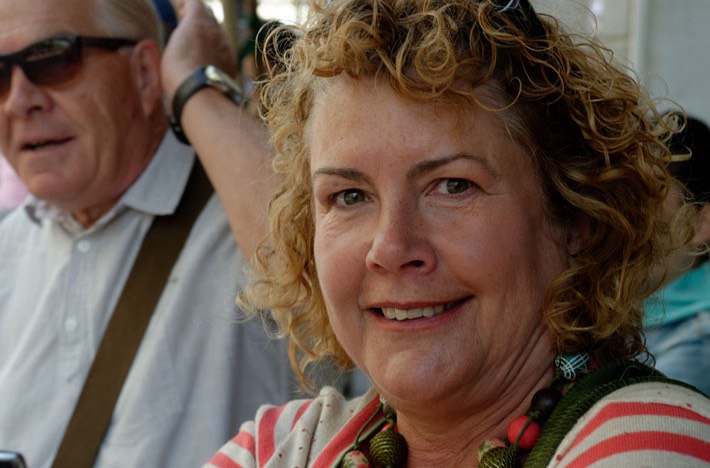
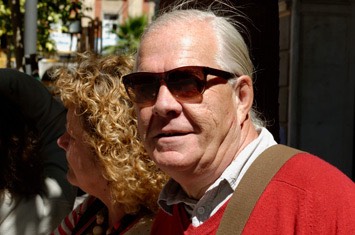
Saturday in El Rocío
Brotherhoods from all over Andalucía and beyond converge on El Rocío, arriving a few days before Pentecost; some may take a week or so for the trek. On Saturday each brotherhood moves past the church in one long procession. As we had missed our friend Rocío at the salida in Huelva, we hoped to find her among the vast crowd during this part of the Romería. We parked on the outskirts of the town and walked through the sandy streets, engulfed in the seething mass of people, horses, mules, wagons and shrines, seeking the Hermandad de Huelva.
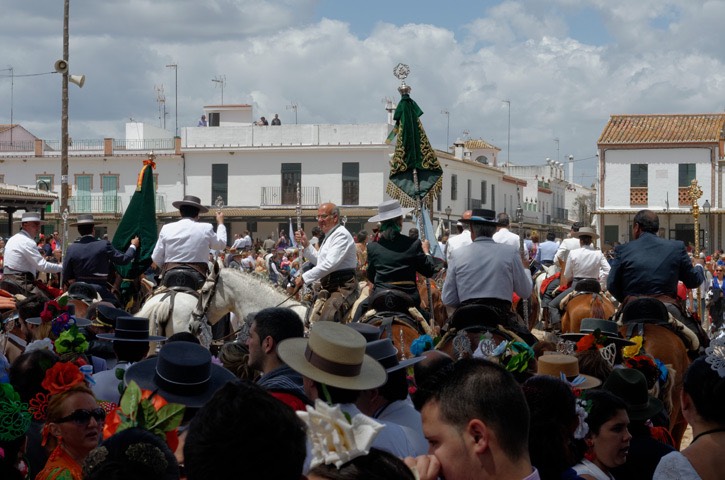
Everywhere we went there were brotherhoods at different stages of their pilgrimage, some just arriving, some setting off on the procession, while others were returning to their Hermandad’s houses. Everywhere, people crowded around the stunningly decorated shrines.
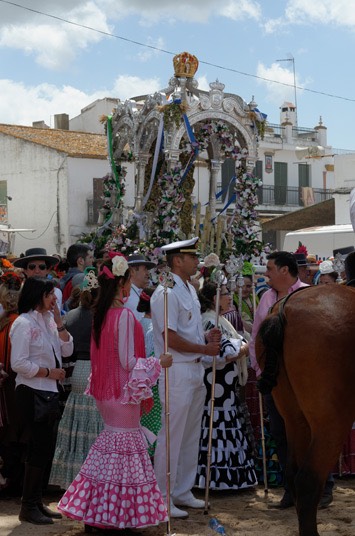
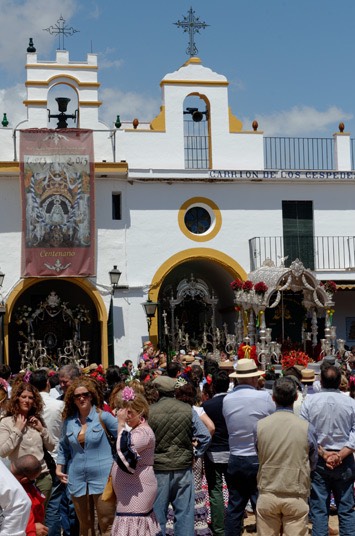
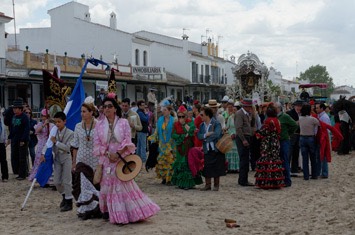
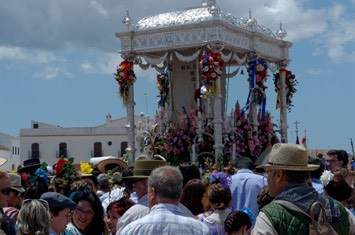
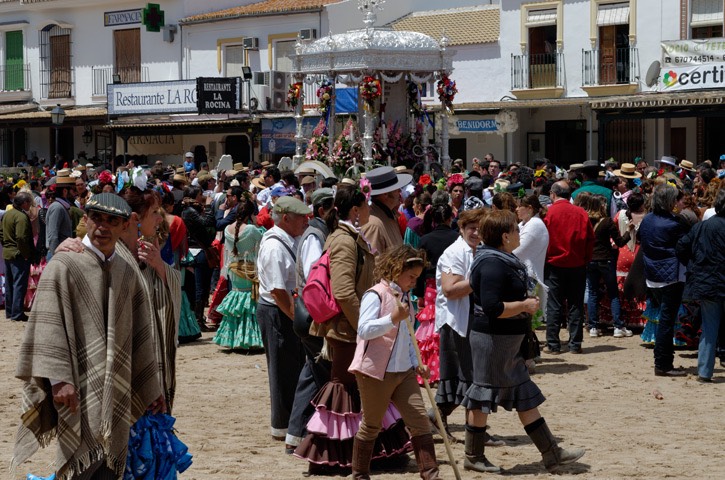
Many walked on foot but large numbers of pilgrims waited on horseback for their turn in the procession. It was surprising to see these horses stand quite calmly in amongst the apparently chaotic madness that is El Rocío at the Pentecost weekend.
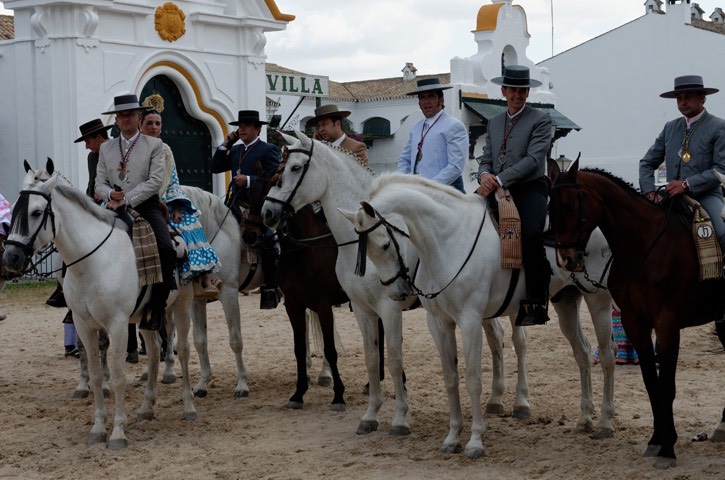
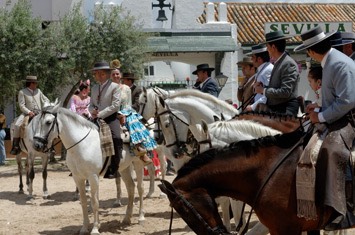
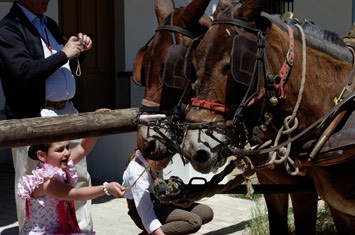
All brotherhoods seem to have at least one band, in which musicians play a fife with one hand and beat a drum with the other.
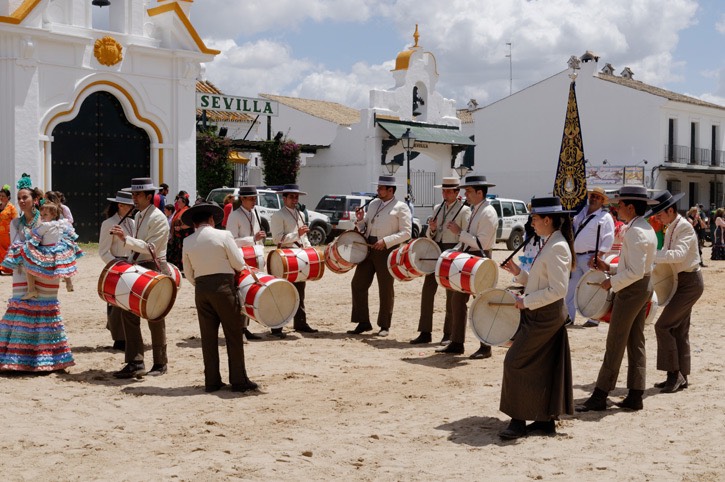
Traditionally, massive oxen are used to pull the shrines and two-wheeled wagons. These hugely impressive beasts were everywhere and we were delighted to see a small procession just made up of these archaic looking wagons.
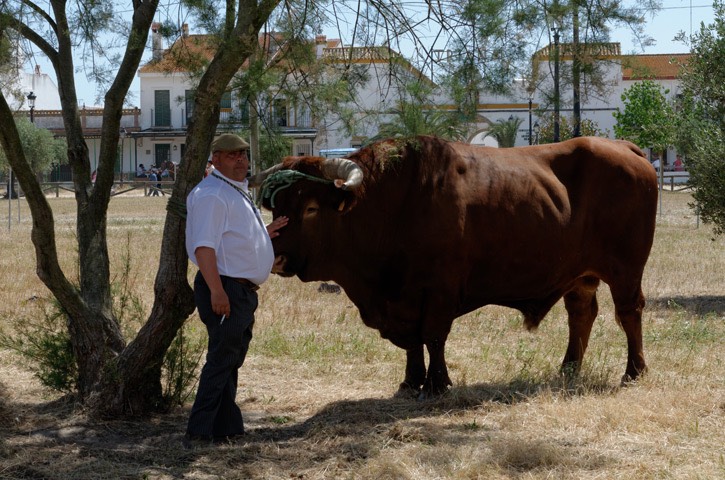
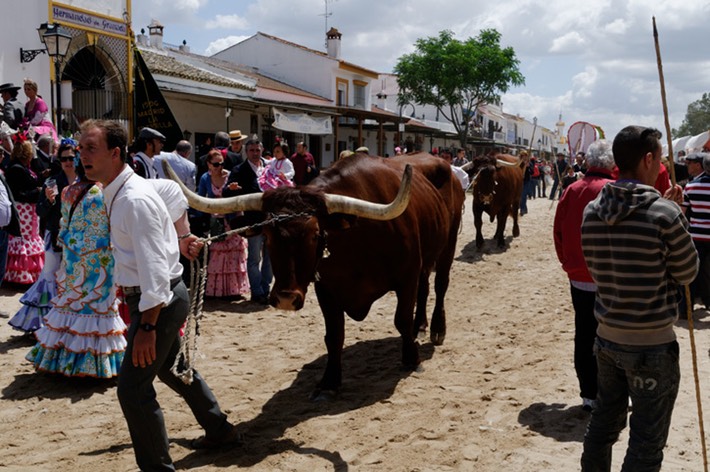
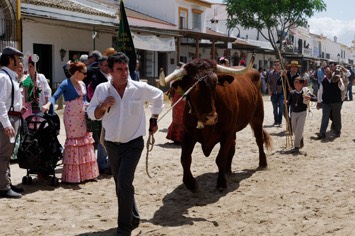
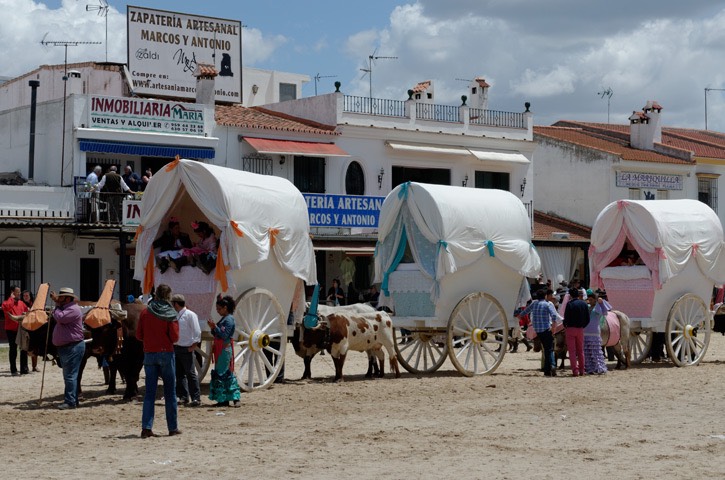
The oxen were adorned with decorations matching the colour scheme of their wagons. Some of the beasts were absolutely massive but they all were very well behaved and appeared quite docile.
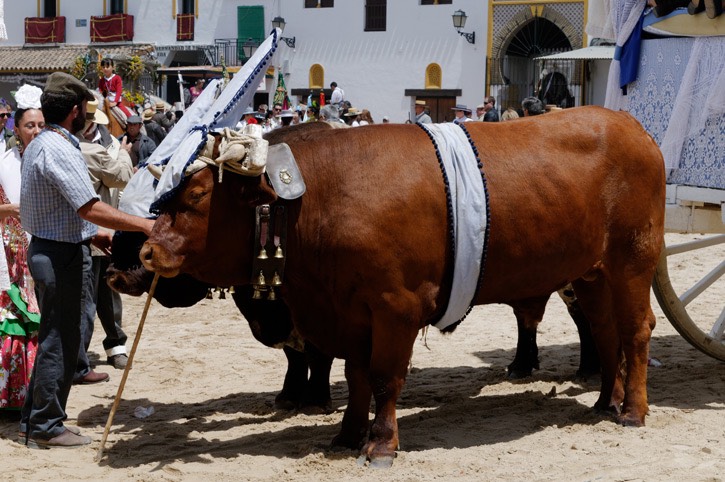
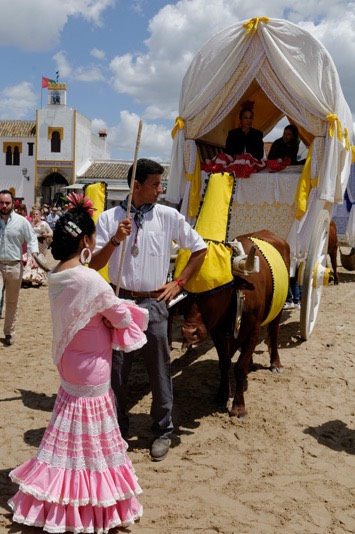
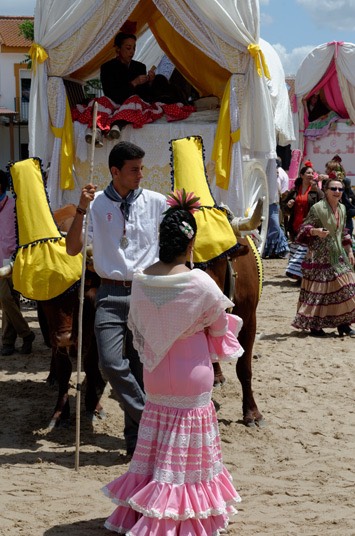
Oxen drawing shrines were especially splendid, with the silver headpieces of the animals perfectly matching the ornate filigree of the shrines.
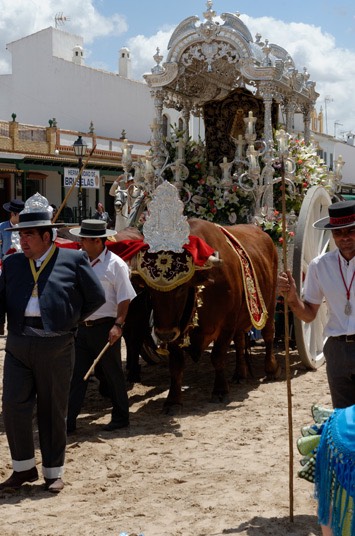
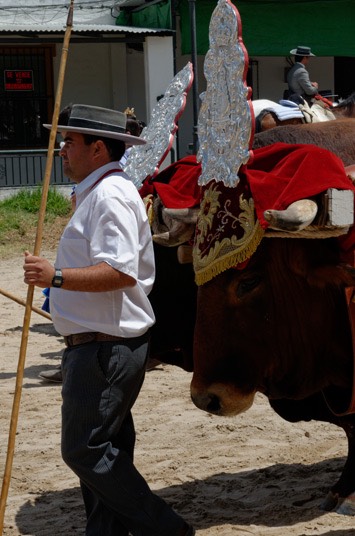
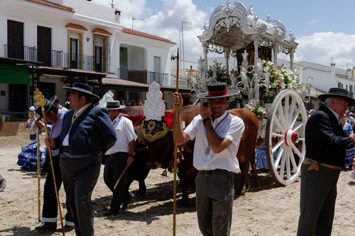
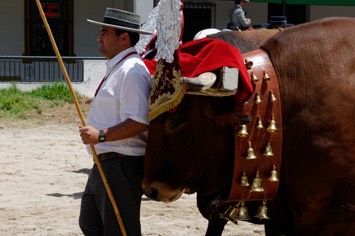
At last we found the Huelva brotherhood forming up for their procession and we were able to marvel at the decorations of the animals and wagons. Some of the mules had curious patterns shaved into their fur. Most wagons had intricate decorations on them, one of the most impressive being a miniature scene of the brotherhood arriving at the church to pay homage to the virgin. The white dove, la blanca paloma, a key symbol of the virgin of Rocío, was ever present.
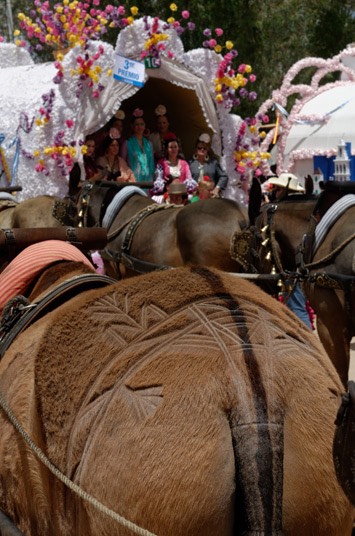
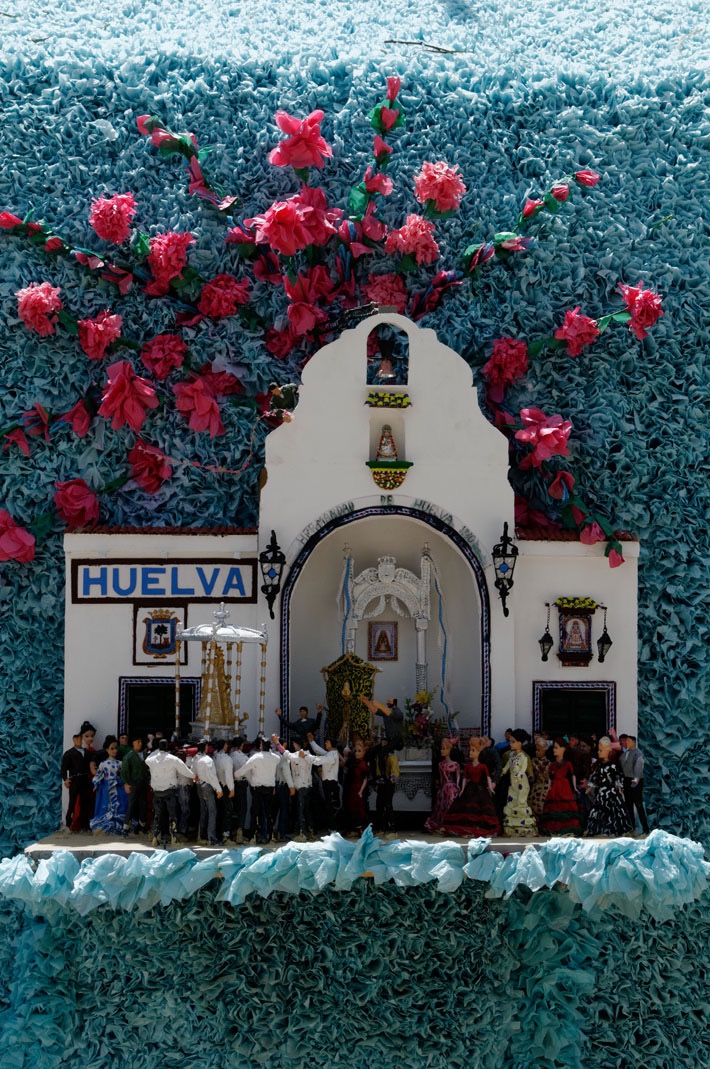
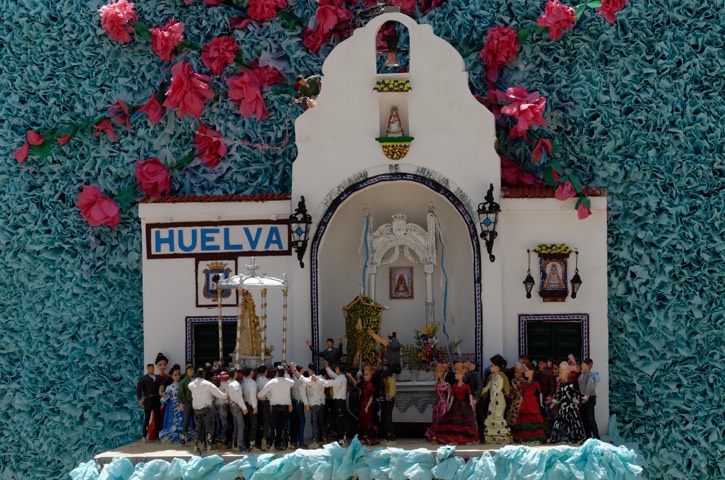
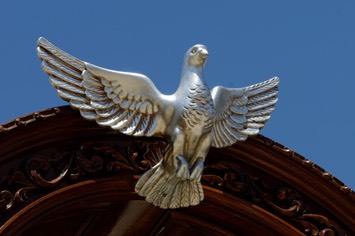
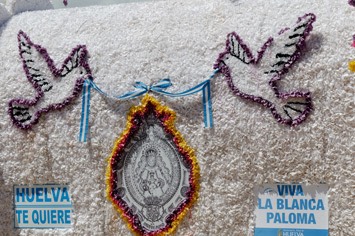
Finding the shrine, we knew we were nearing the head of the Huelva procession.

Finally we arrived at the front of the procession led by the drummers, followed by all the horse riders.
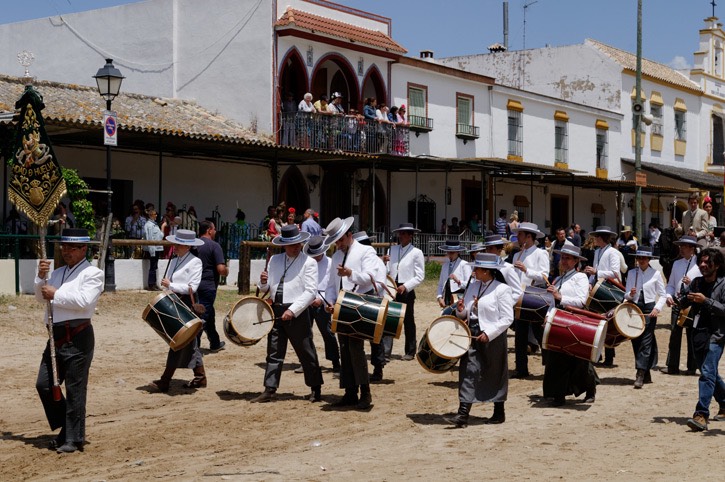
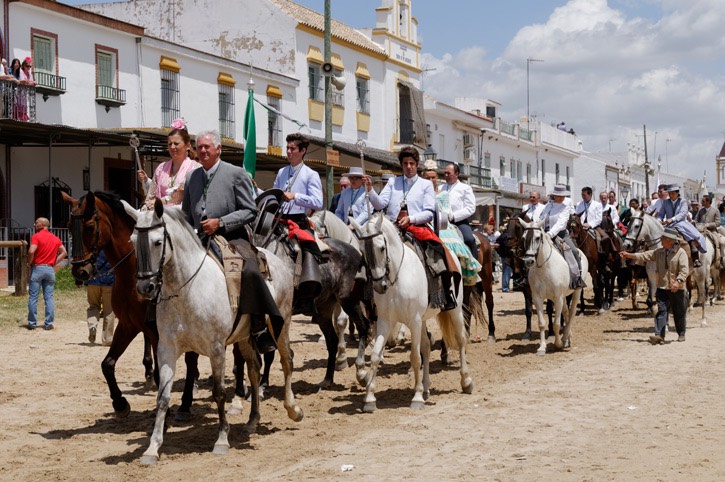
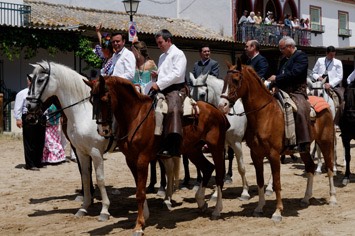
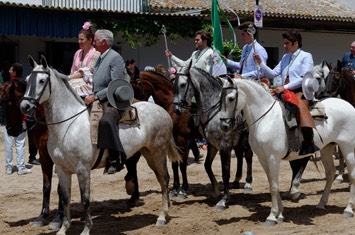
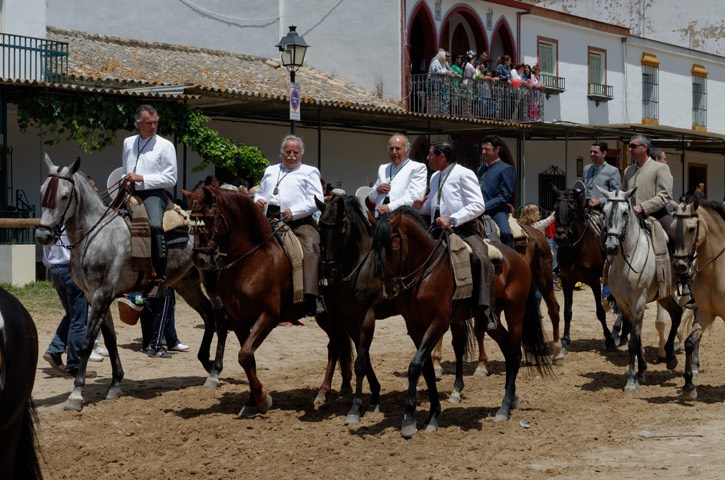
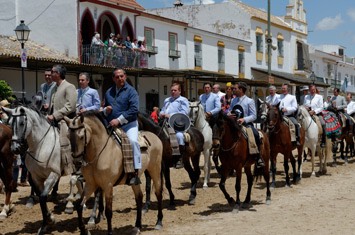
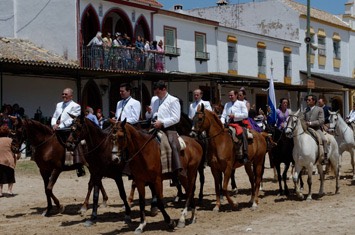
We kept our eyes peeled, and at last we saw the familiar face of our friend Rocío, a big smile lighting up her face when she recognised us. It was also the first time that we saw Bambina, a new horse from the stables - and what a pretty horse she is!
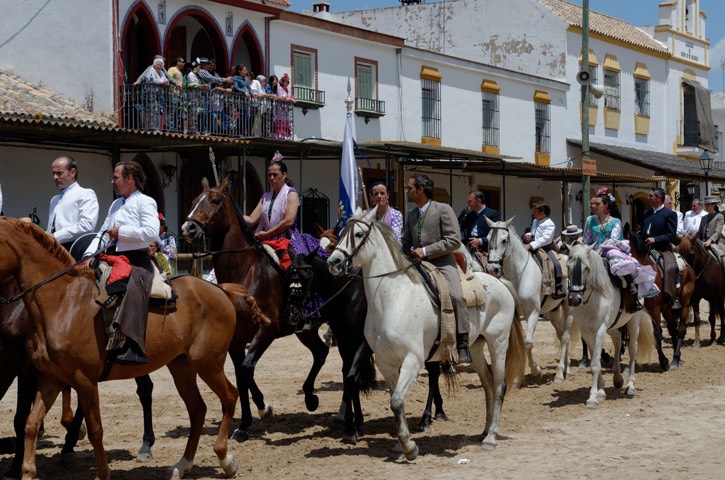
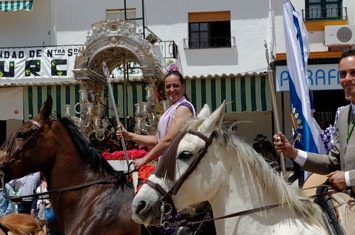
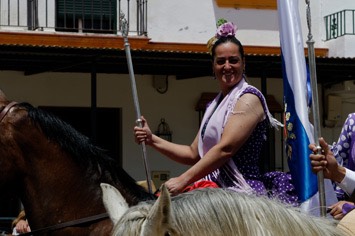
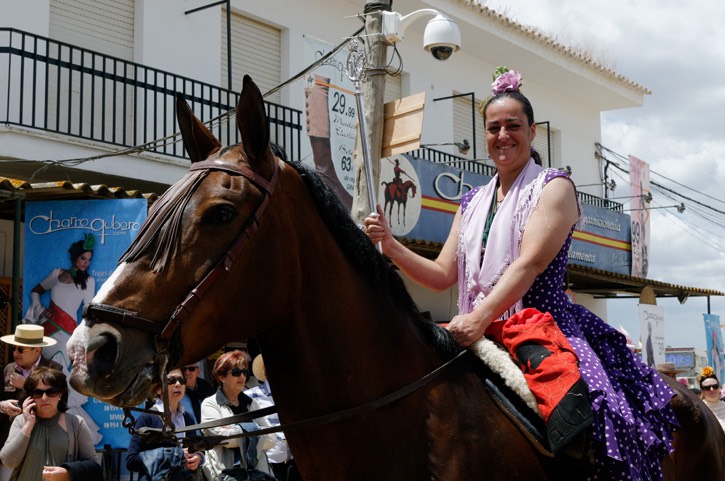
We quickly skipped ahead to get another chance of taking photographs of the Huelva procession, and caught up with the ox-drawn wagons.
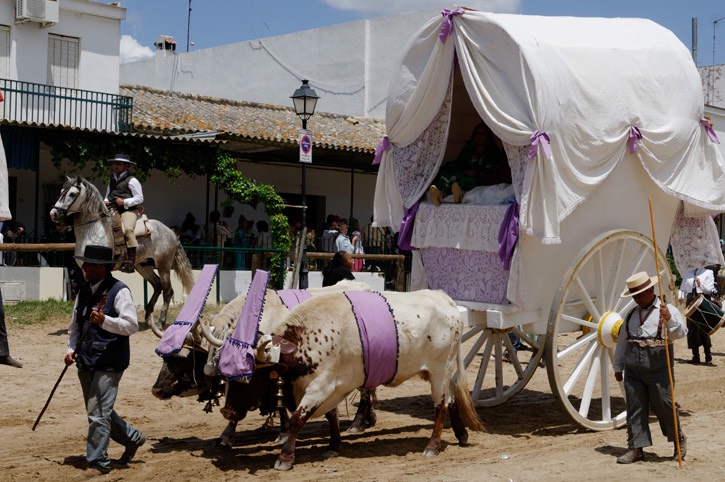
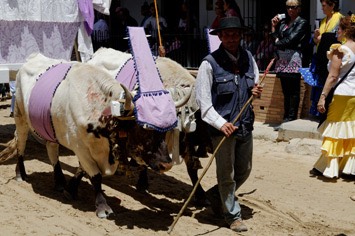
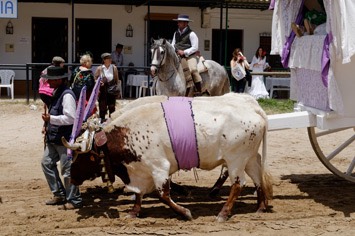
Then along came the band with the standard of the brotherhood proudly carried at the head.
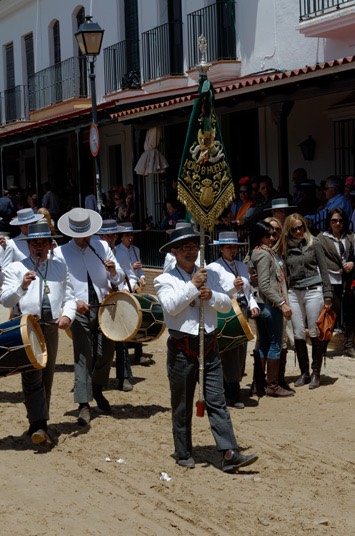
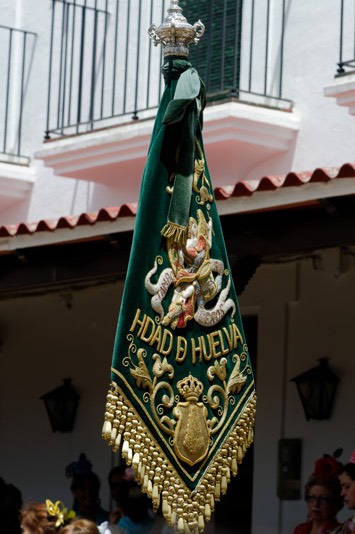
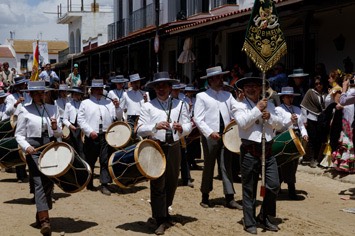
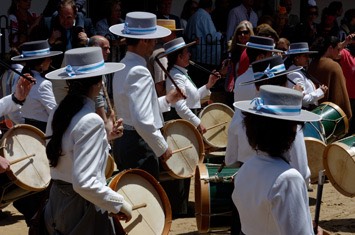
More flags followed, including the Spanish national flag, all carried by riders on horseback.
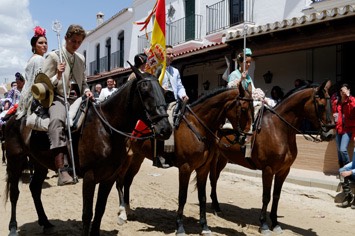
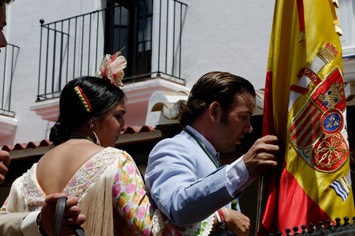
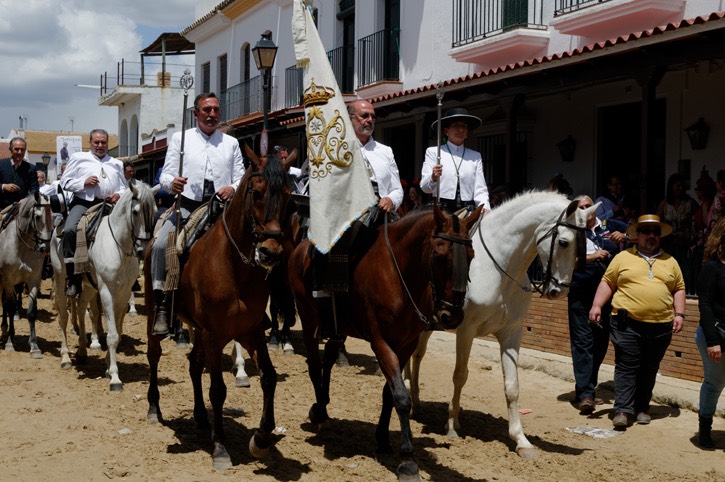
Both men and women on horseback looked especially dignified in their formal dress.
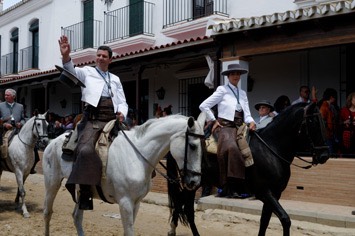
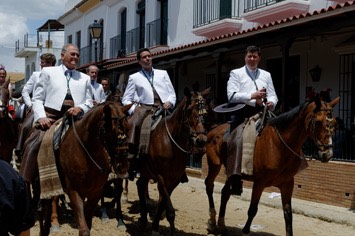
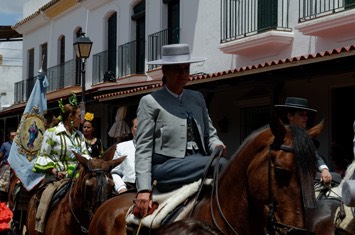
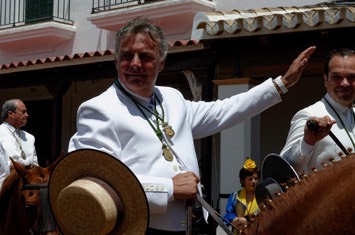
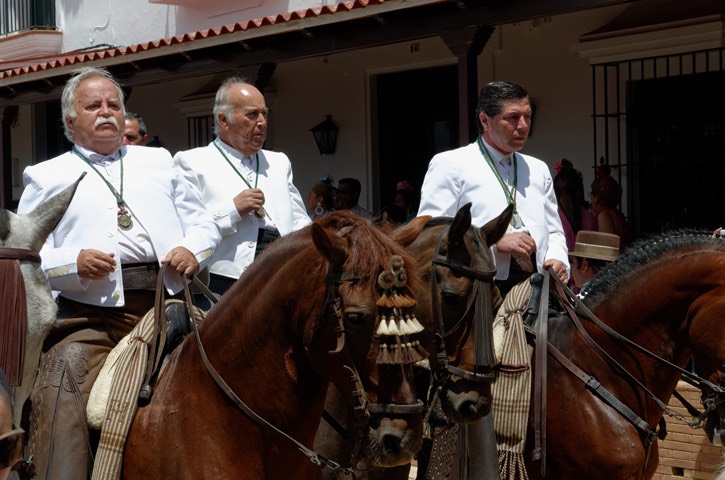
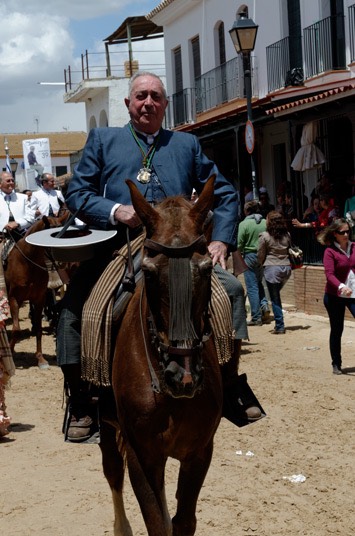
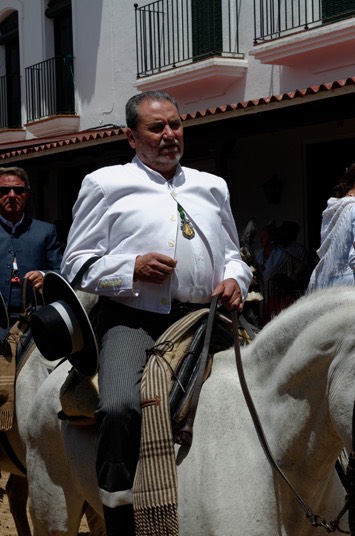
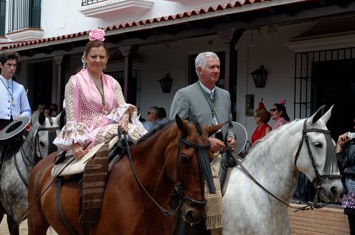
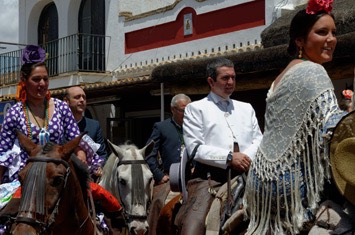
And obviously we had to take lots more photos of Rocío and Bambina.
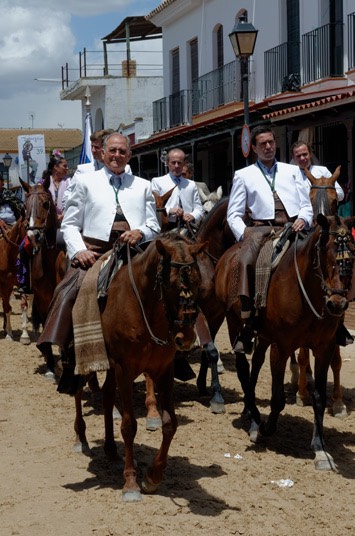
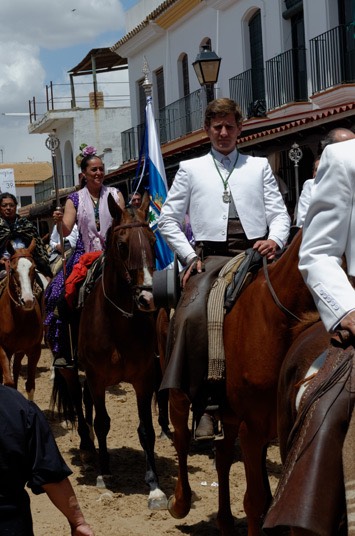
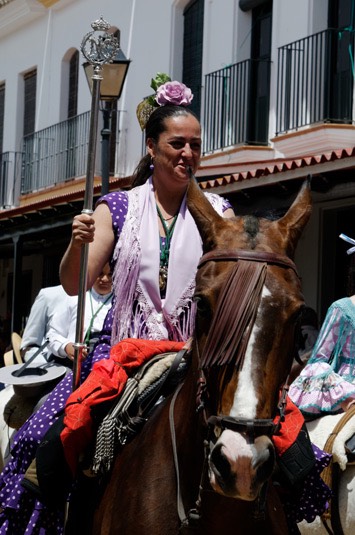
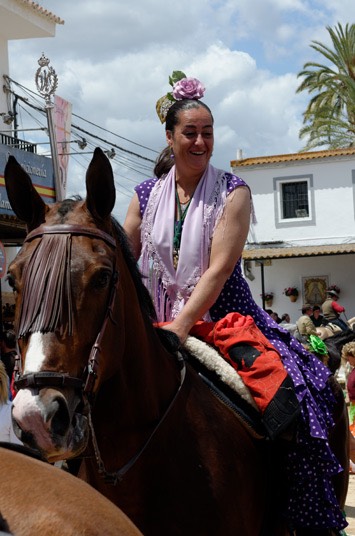
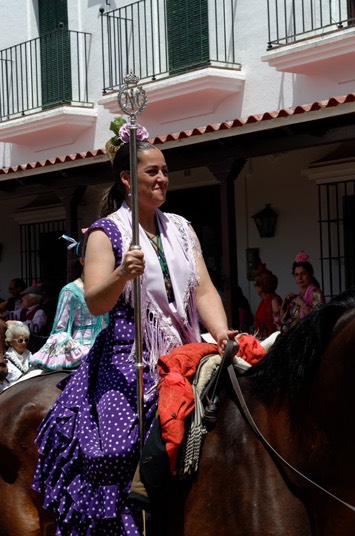
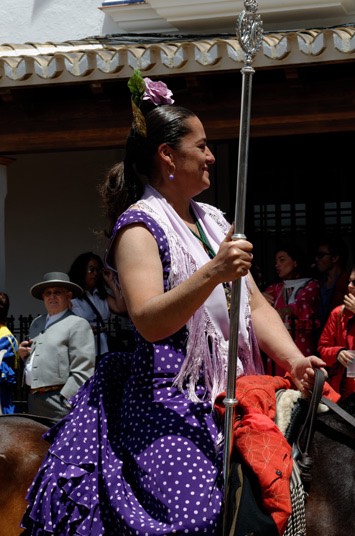
We stood watching the procession moving past, but couldn’t easily follow them to the church to see what went on there, due to the dense crowd of spectators.
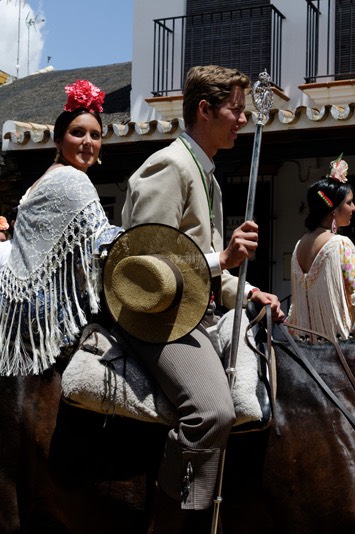
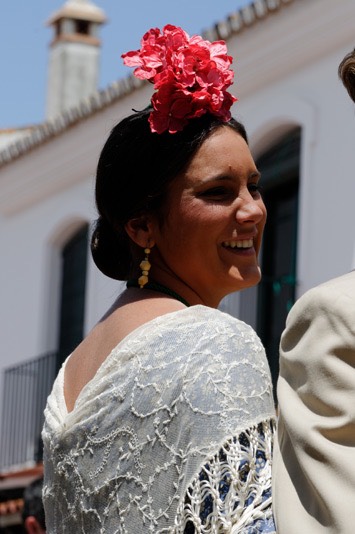
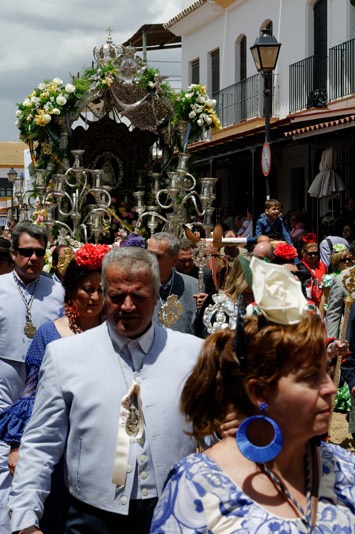
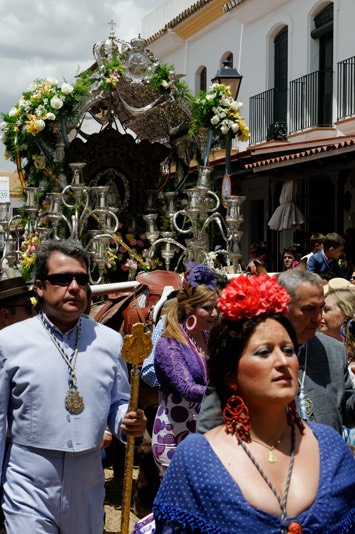
We set off for a bite to eat, although finding a free table in a restaurant proved not to be an easy feat. We sat over our tapas watching the world pass by: an endless succession of ox-drawn wagons, carriages, horses and people.
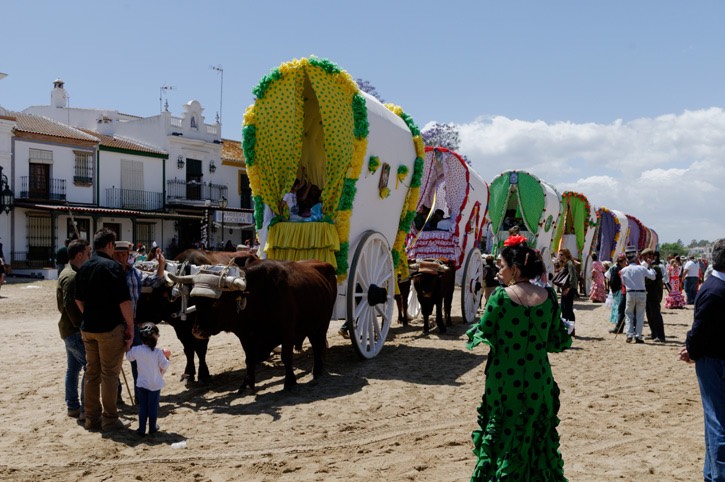
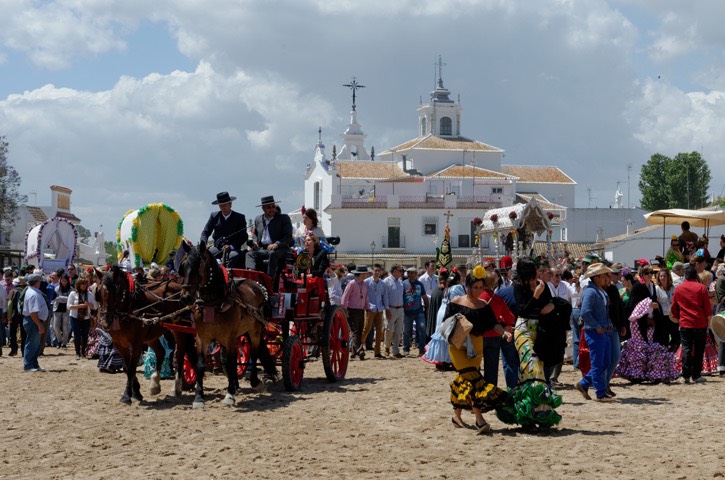
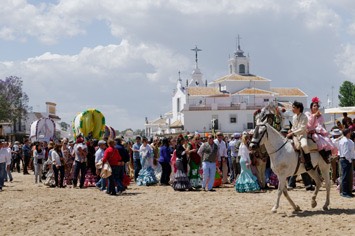
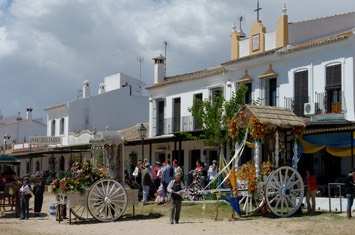
After a welcome lunch break we strolled on, passing many beautifully decorated shrines. While most of the brotherhood houses seemed to be bustling with life, that of our village of Lucena del Puerto appeared to be rather quiet. Maybe they were all enjoying a well-deserved siesta inside?
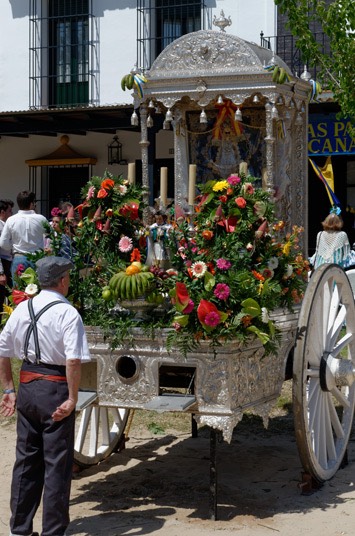
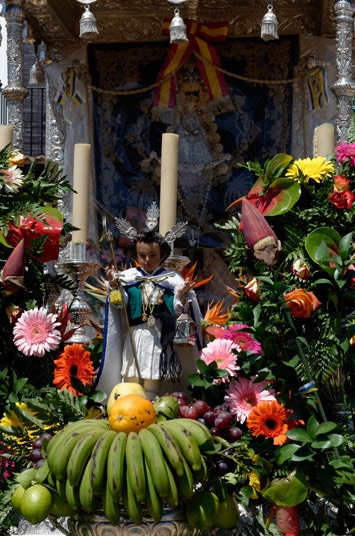
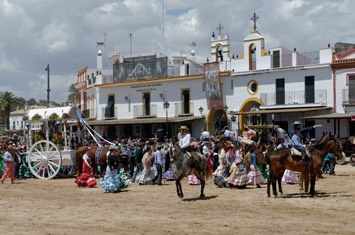

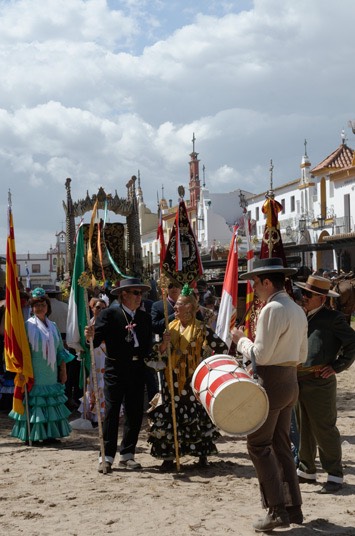
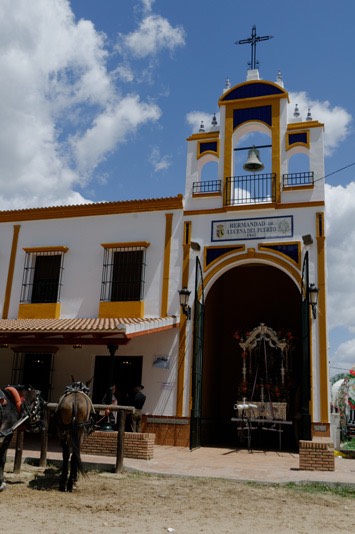
Outside the impressive Hermandad de Sevilla building, a large procession was assembling. Horses and people were milling about everywhere!

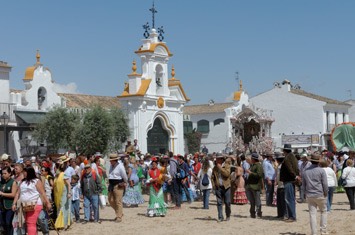
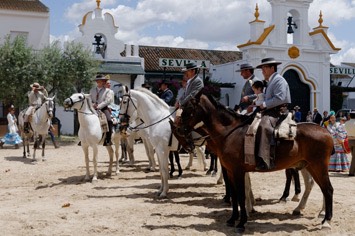
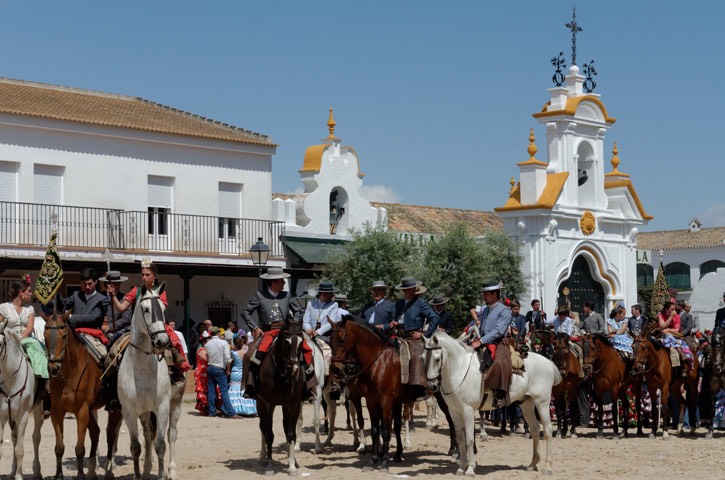
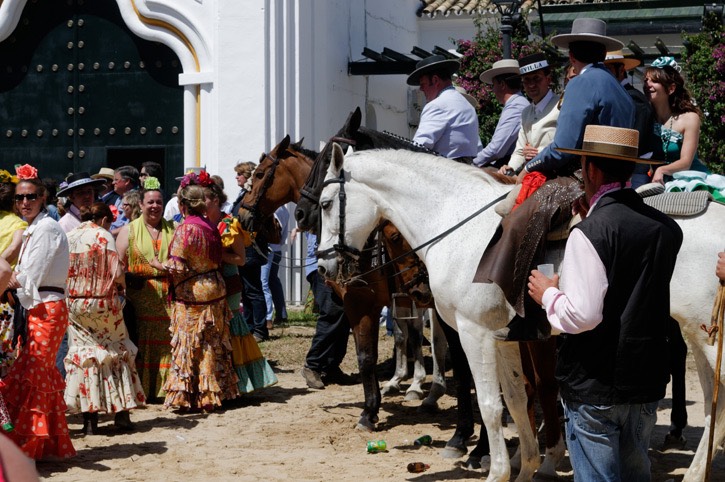
We had seen Guardia Civil policemen on horseback earlier, but the Sevilla procession was led by a group of National Policemen, in smart dark uniforms mounted on beautiful greys.
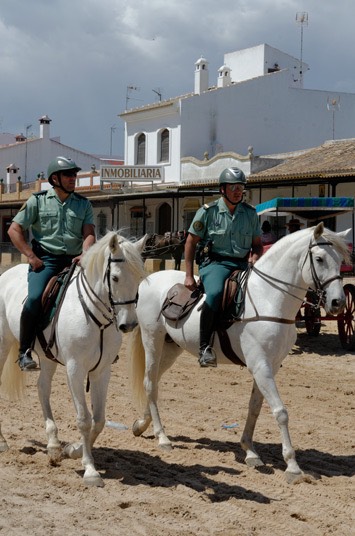
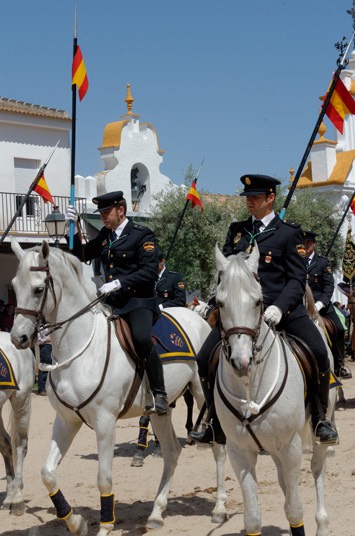
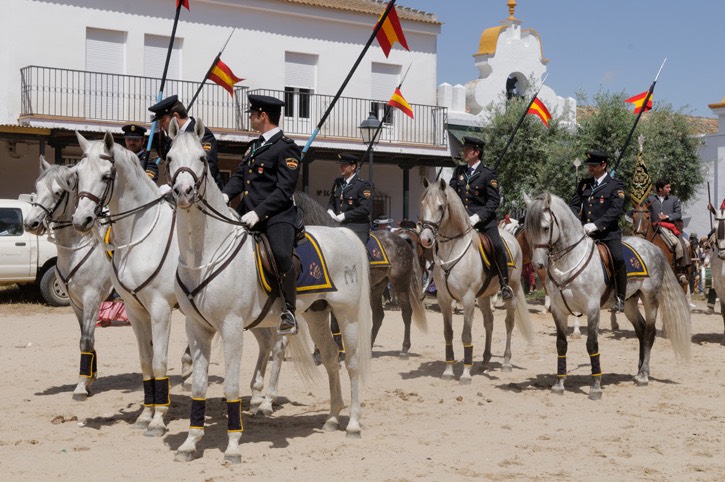
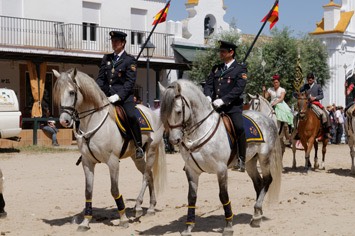


Following this unusual escort came the shrine, horse riders and a throng of pilgrims on foot.
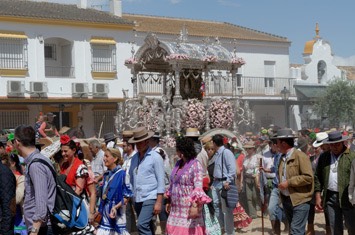
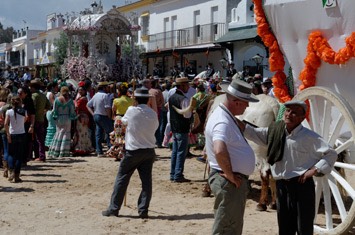
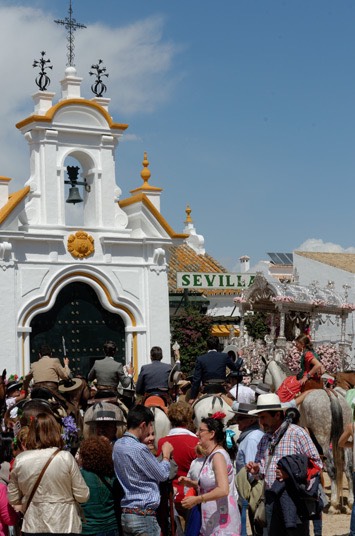
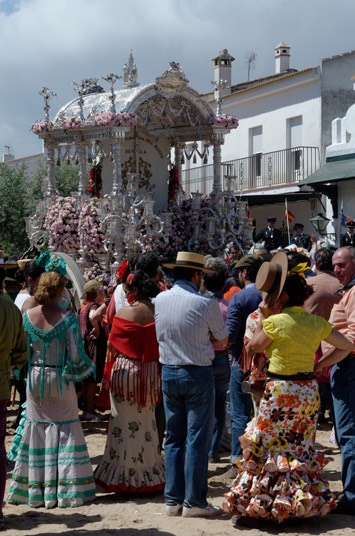
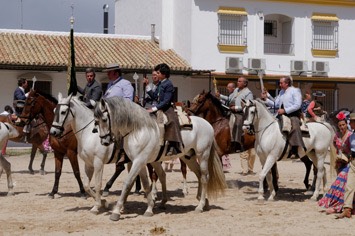
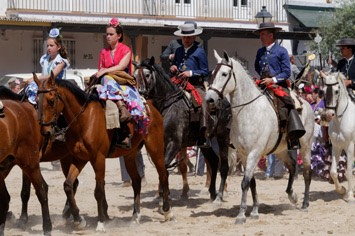
A long line of ox-drawn wagons brought up the end of the brotherhood. Although most appeared empty, every so often one could see people peeping out from behind the curtains.
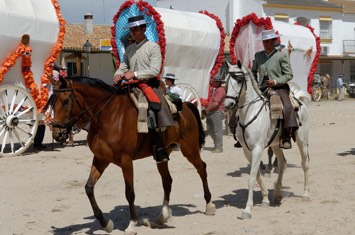
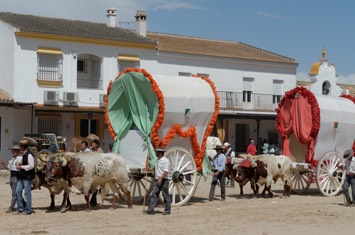

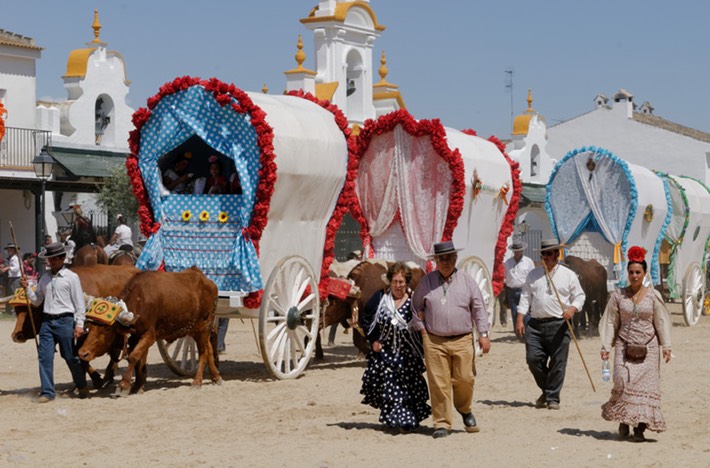
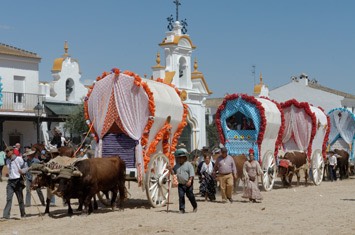
Although some people seemed wary of these massive beasts, the oxen never seemed to react to what was going on around them.
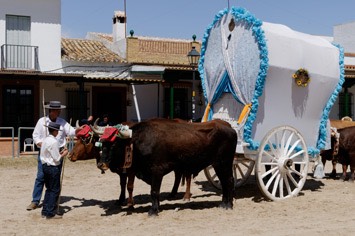
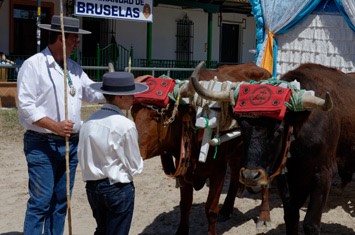
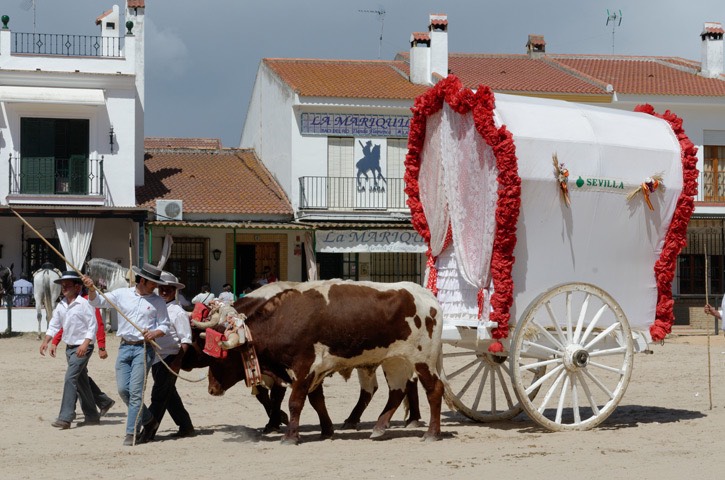
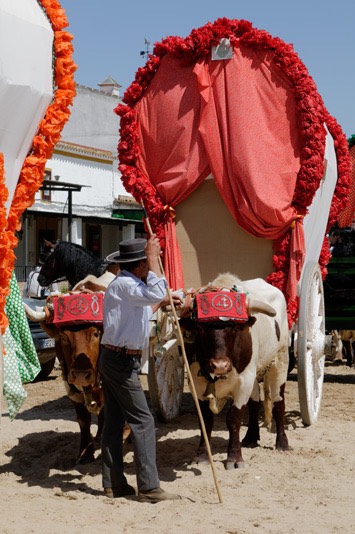
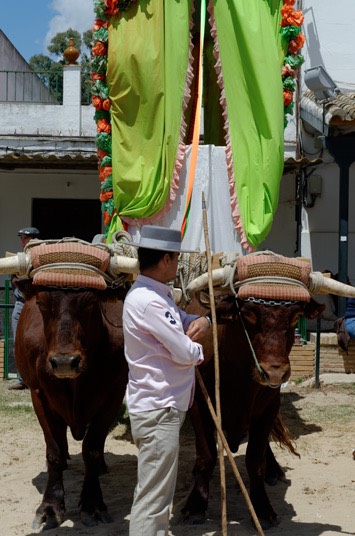
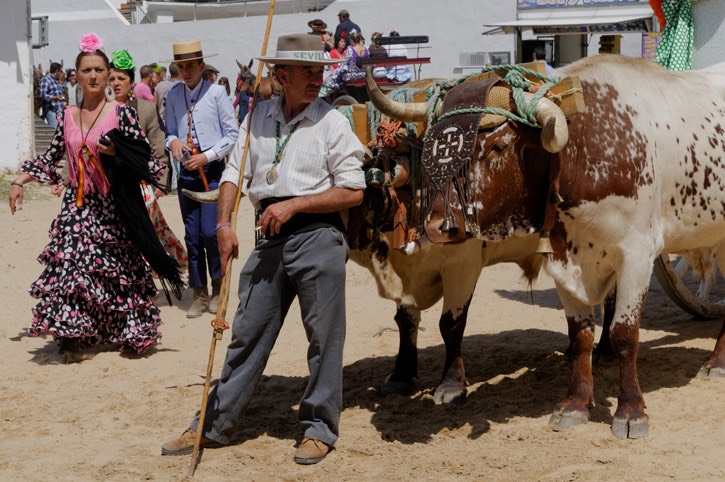
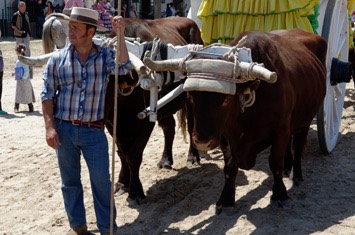
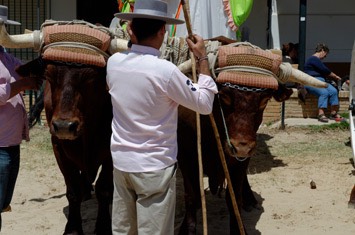
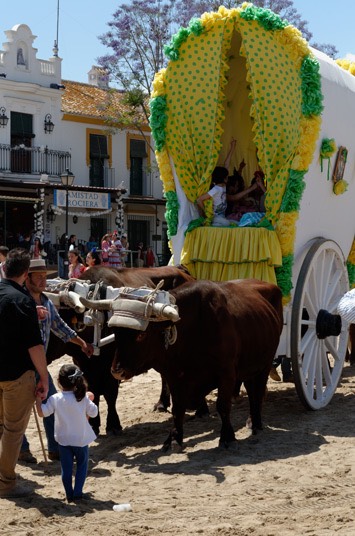
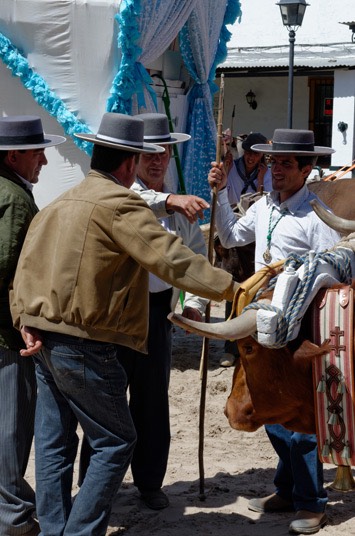
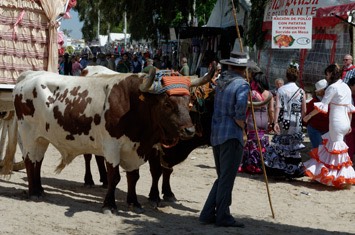
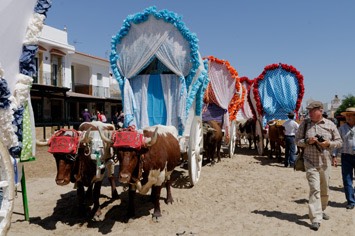
The whole of Rocío was one big, noisy, colourful fiesta, which gave us endless photo opportunities.
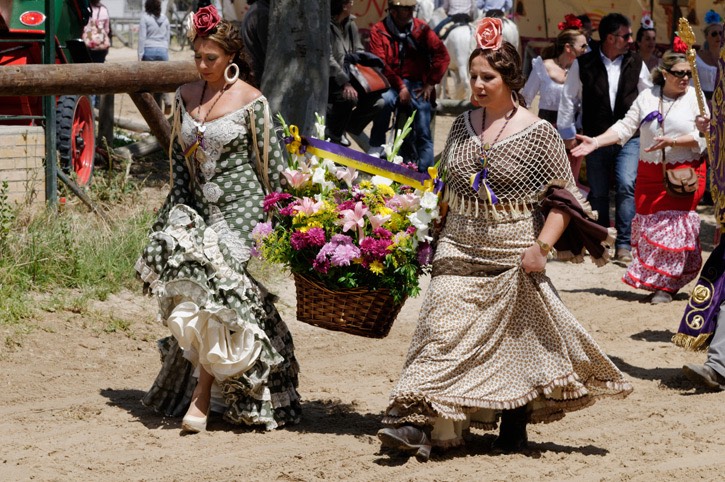
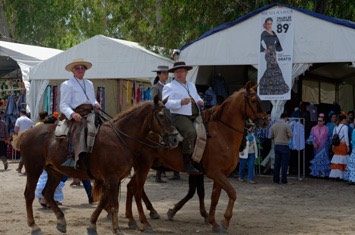
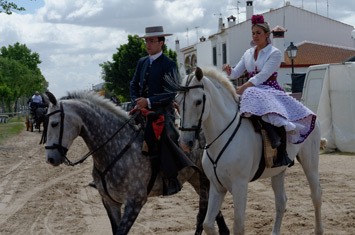
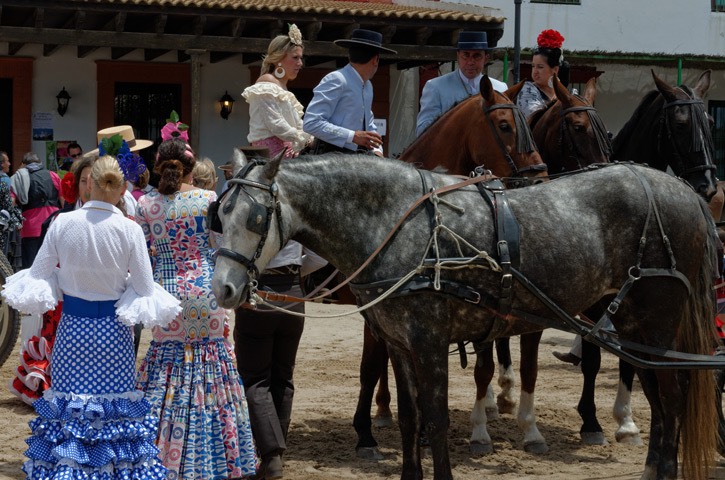
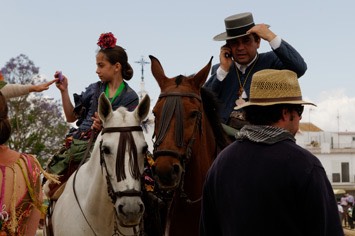
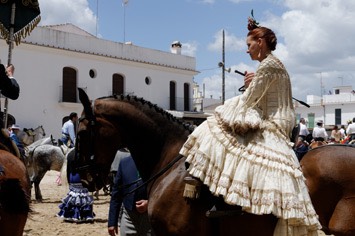
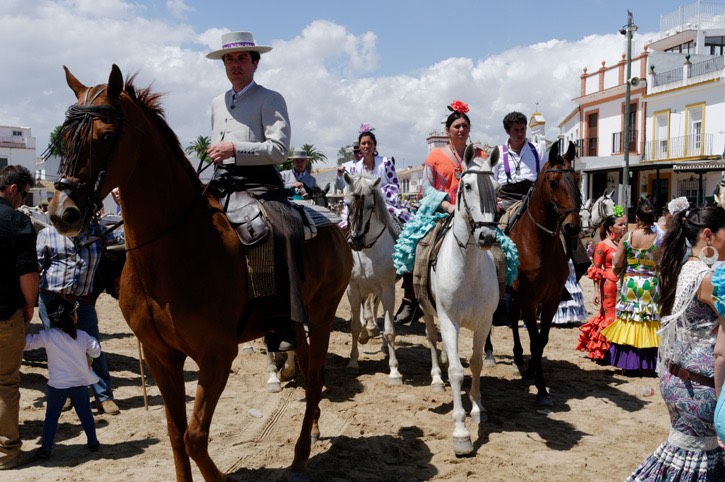
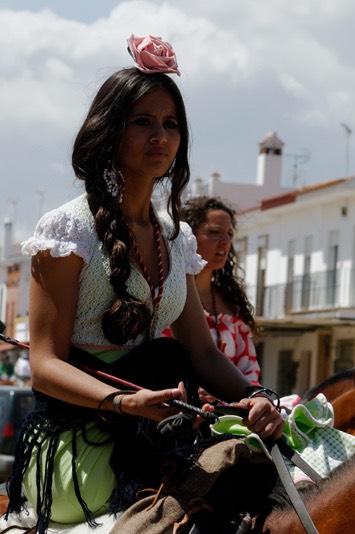
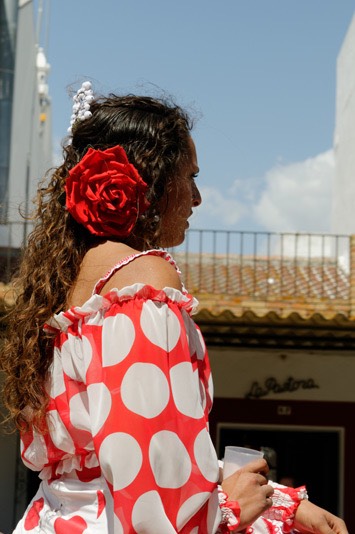
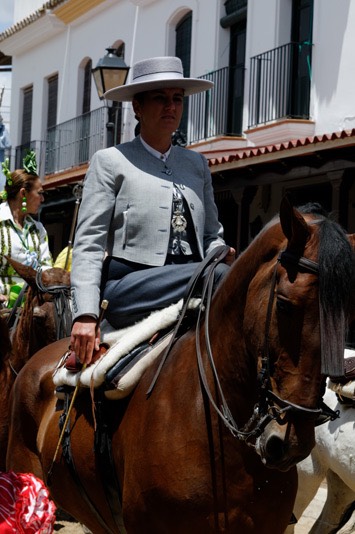
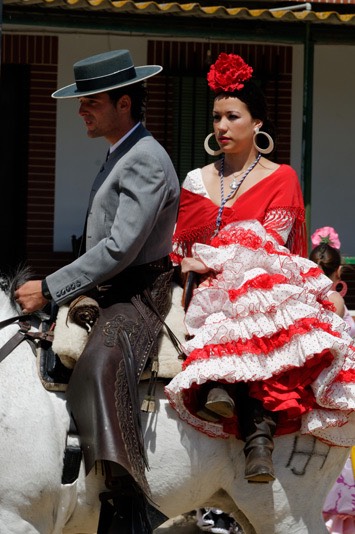
The pilgrims are called romeros, a word with the same root as the herb rosemary. Pilgrims on foot traditionally carry a staff decorated with rosemary. We came across one man with his adorned by wild irises, thistle flowers and rosemary. There's more background information on the pilgrimage and the symbolism involved, on our page for the Romería 2010.
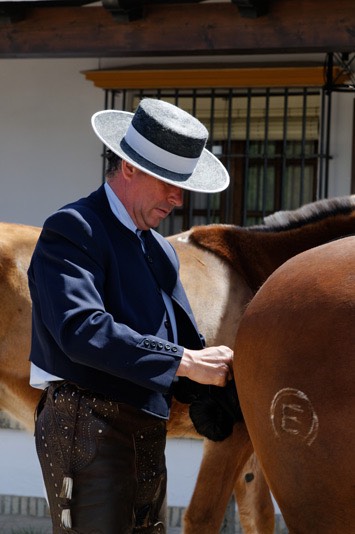
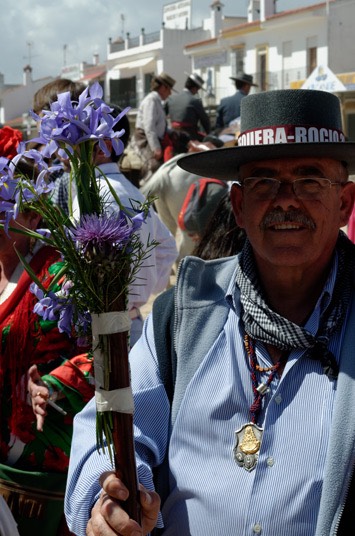
Children were not left out and many were riding relatively big horses. Although usually led by an adult, these youngsters already look like old hands!
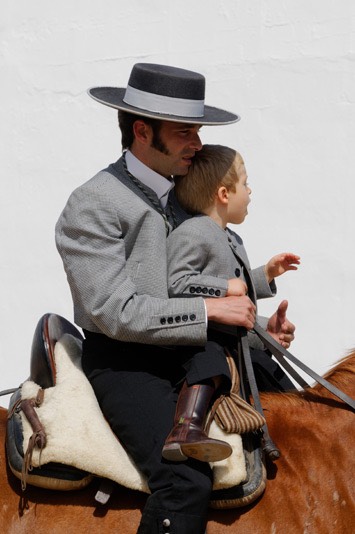
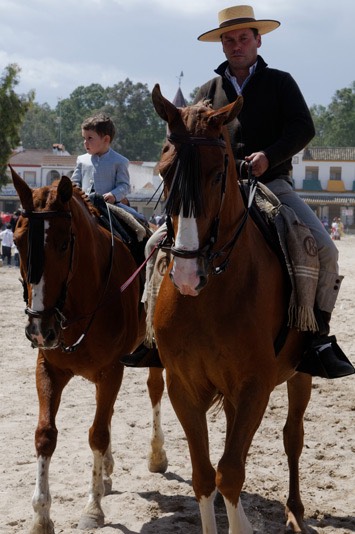
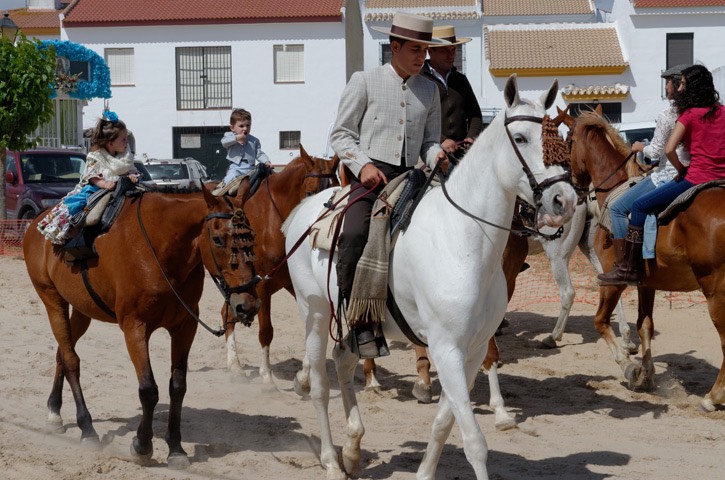
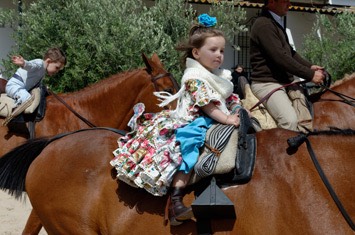
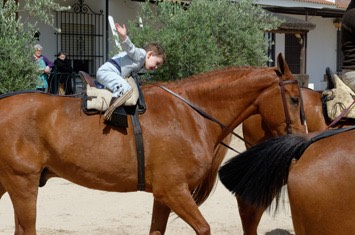
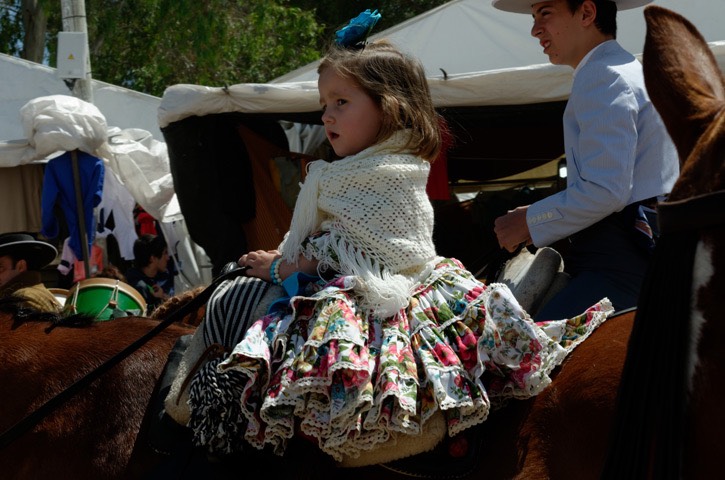
By mid afternoon we were already exhausted and started to head back to the parking area outside of town. We had to admire the stamina of the pilgrims, who celebrate this event not just for a few hours but for days on end!
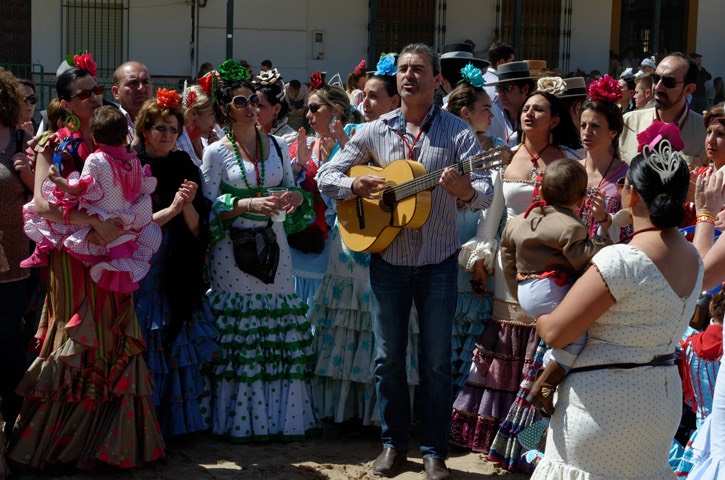
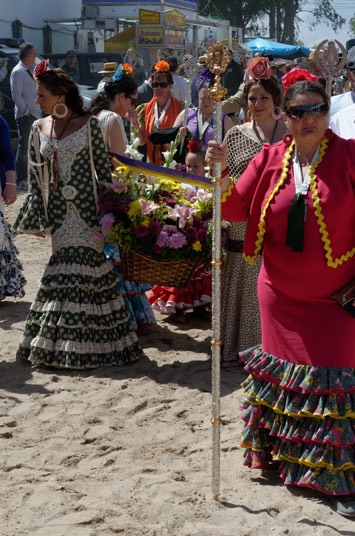
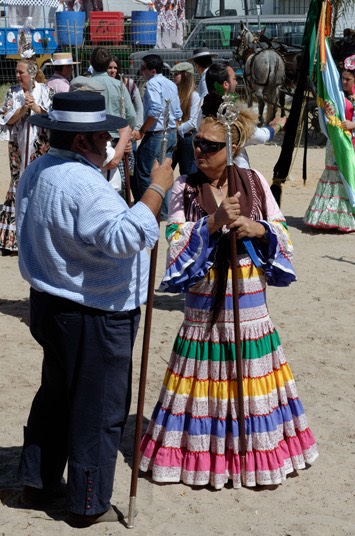
On the outskirts of Rocío things were a bit quieter, where tents catering for feeding the masses had many kinds of meat on display, including whole suckling pigs.
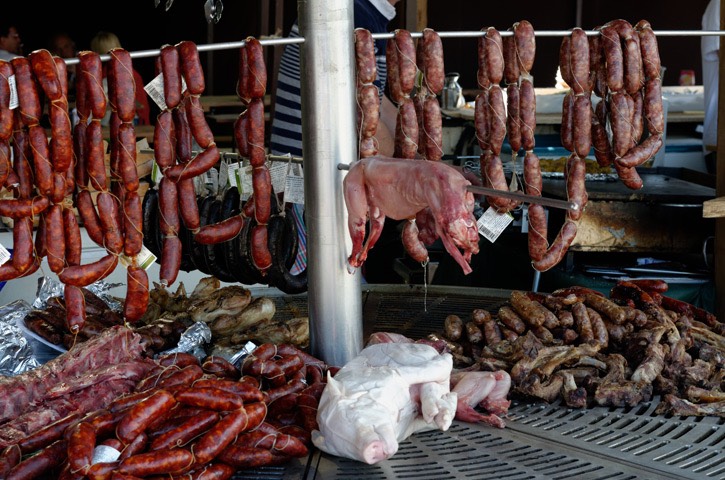
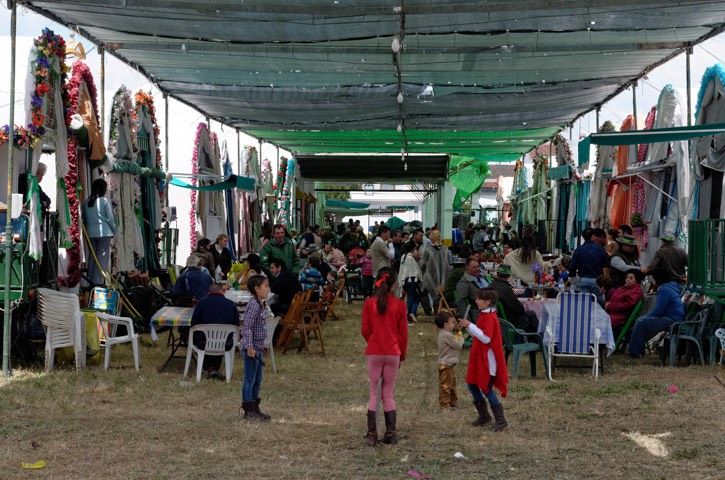
Return to Lucena del Puerto
For most pilgrims the Romería lasts for the best part of two weeks, which is essentially one long fiesta. In Lucena del Puerto, the nearest village to our house, another big party takes place to welcome the pilgrims' return. In the recreational area outside the village, little tents are set up under the pines. We were invited to come along by our friends from the stables, so we headed out to see Ana, Rocío and Sara. It’s all about drinking, eating, riding and hanging out together.
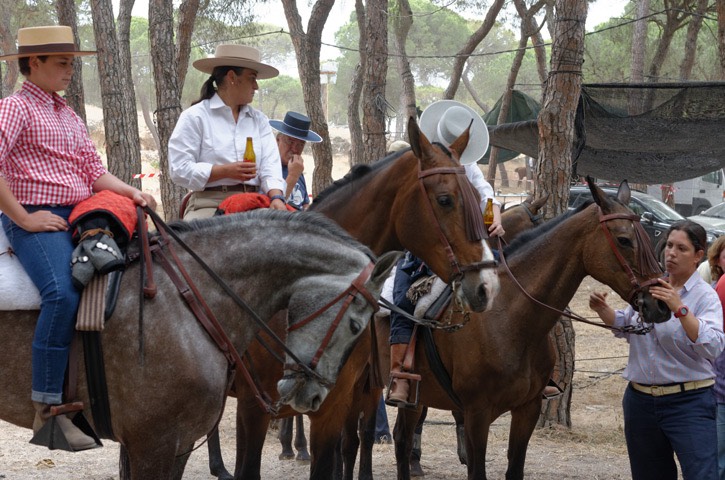
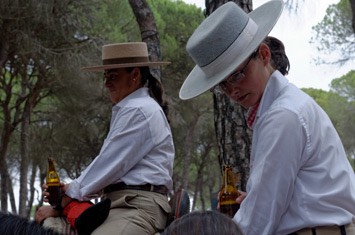
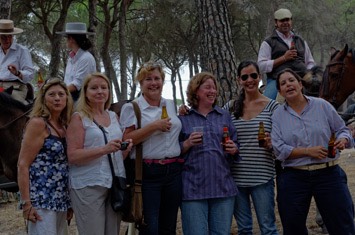
Here are a few portraits of our friends from the stables: Angus on Morena, Rocío on Bambina and Ana on Panderetta.
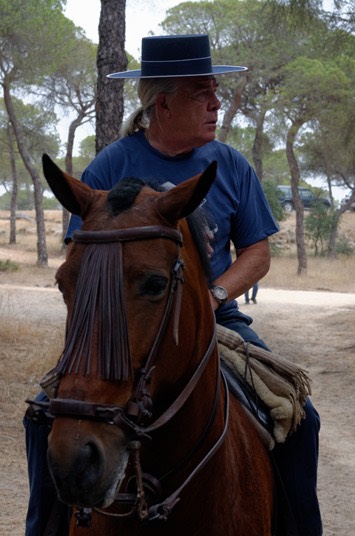
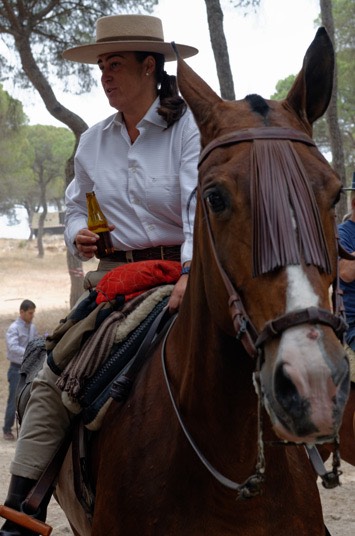
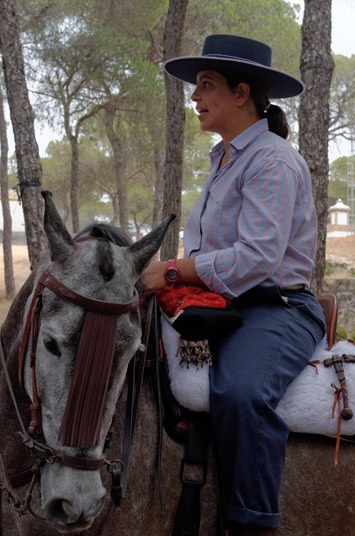
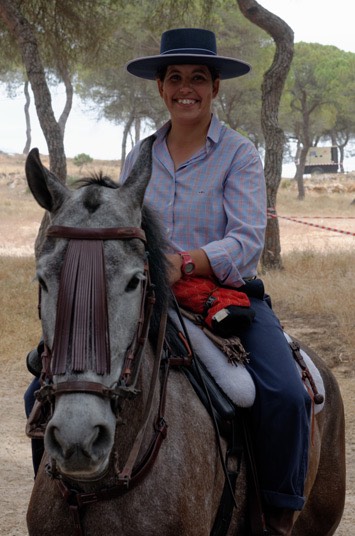
Rocío quickly found herself a “passenger” - this little chap had absolutely no fear of big horses!
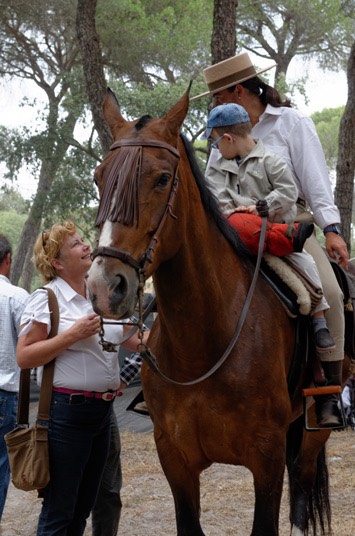
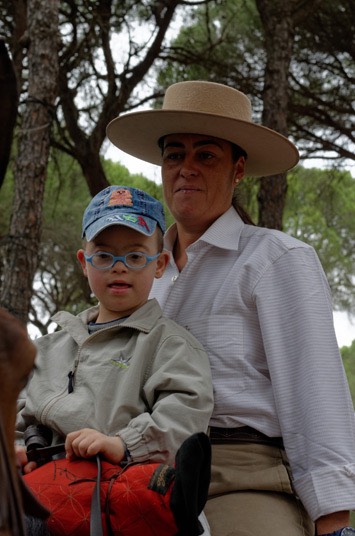
While the adults spent most of their time eating and drinking, the youngsters were out and about showing off their riding skills.
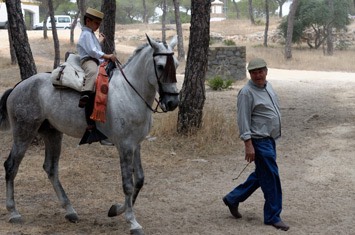
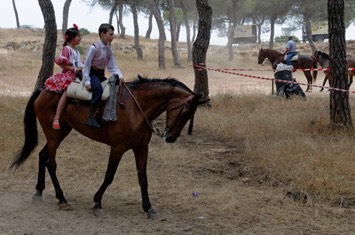
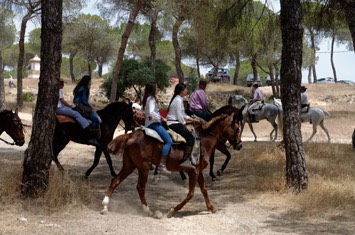
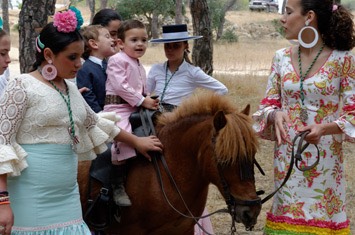
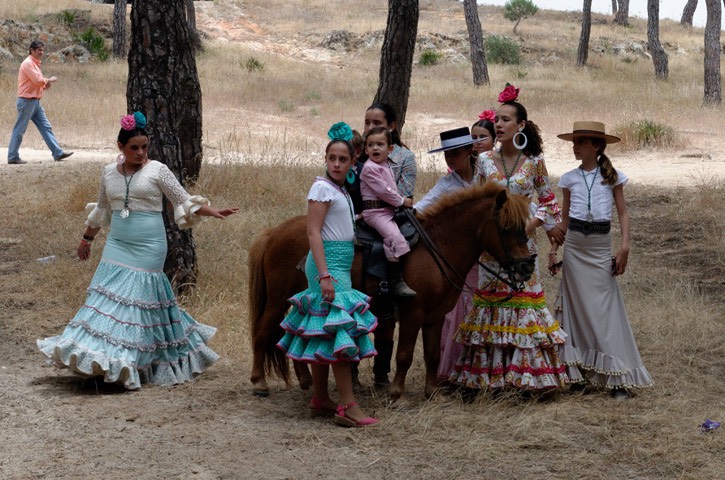
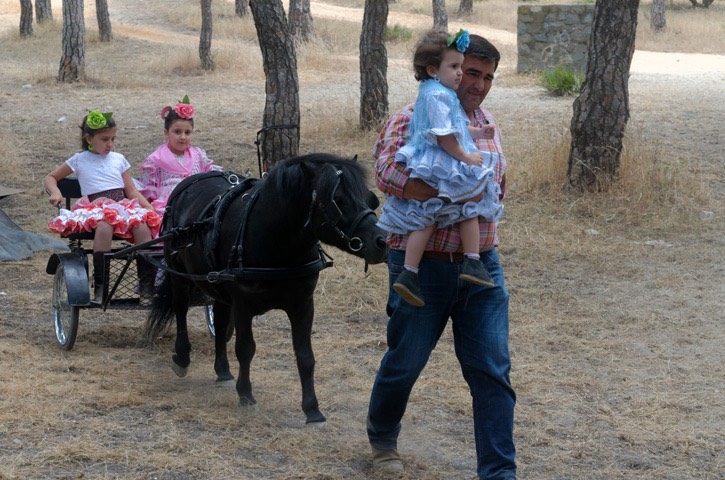
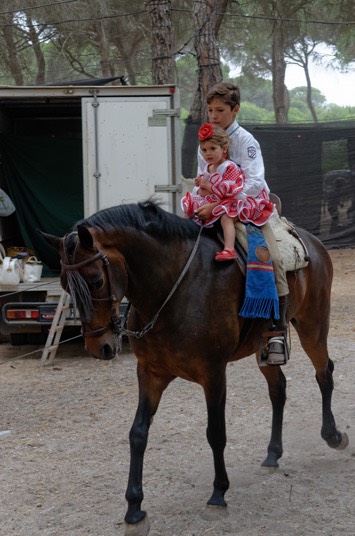
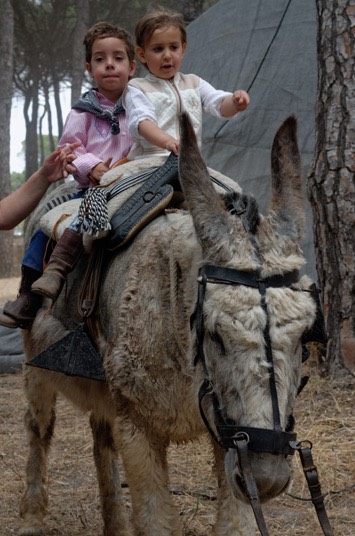
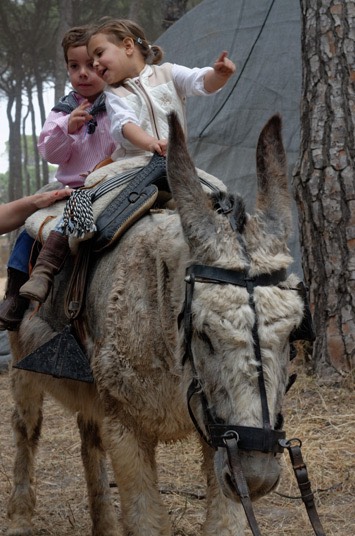
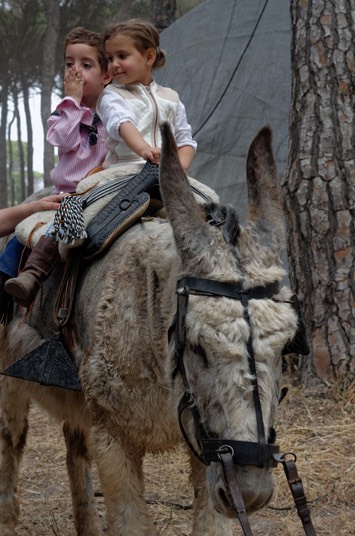
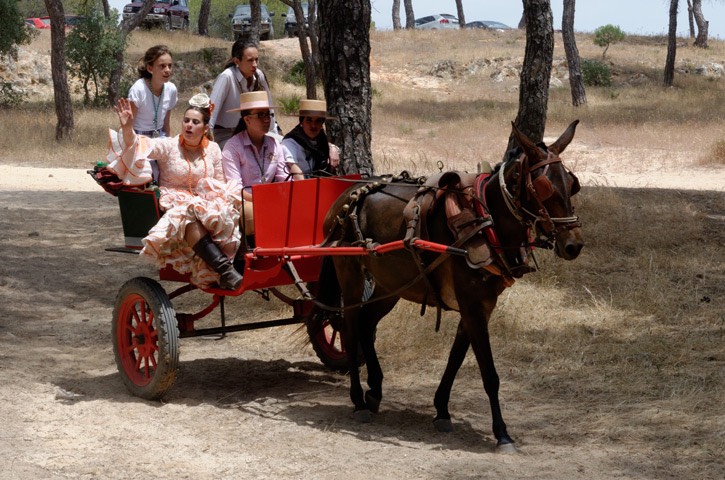
Having seen three different aspects of it that we hadn’t experienced before, we felt that we had added a few more pieces to the jigsaw puzzle that is the Romería. It is such a spectacular event that we are looking forward to seeing it again the next time we get the chance!